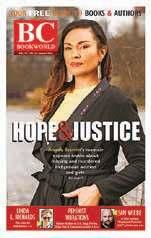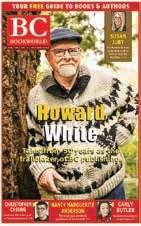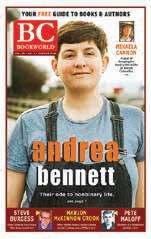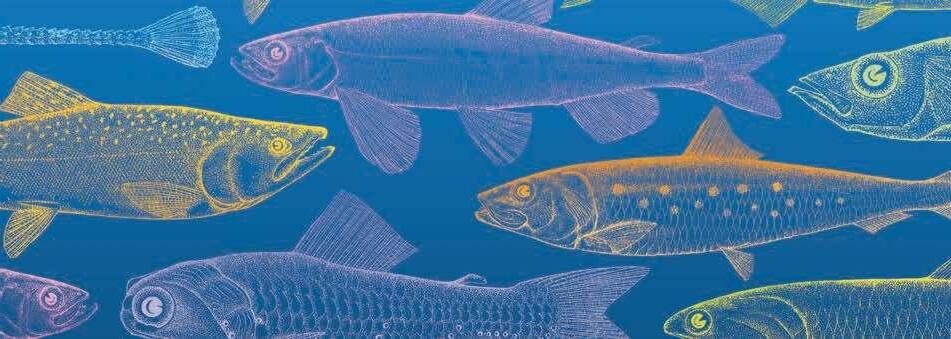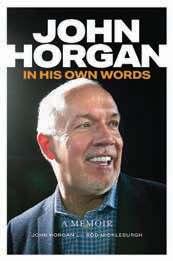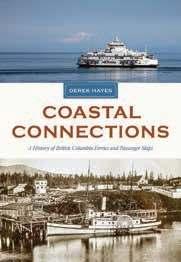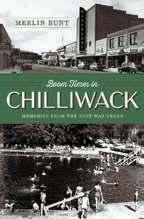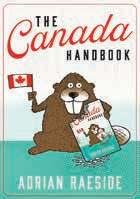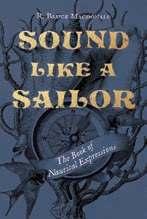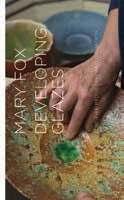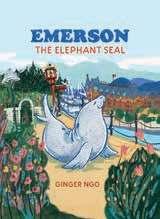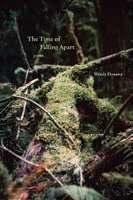Brian Thomas Isaac

Brian Thomas Isaac Becoming

Brian Thomas Isaac

Brian Thomas Isaac Becoming
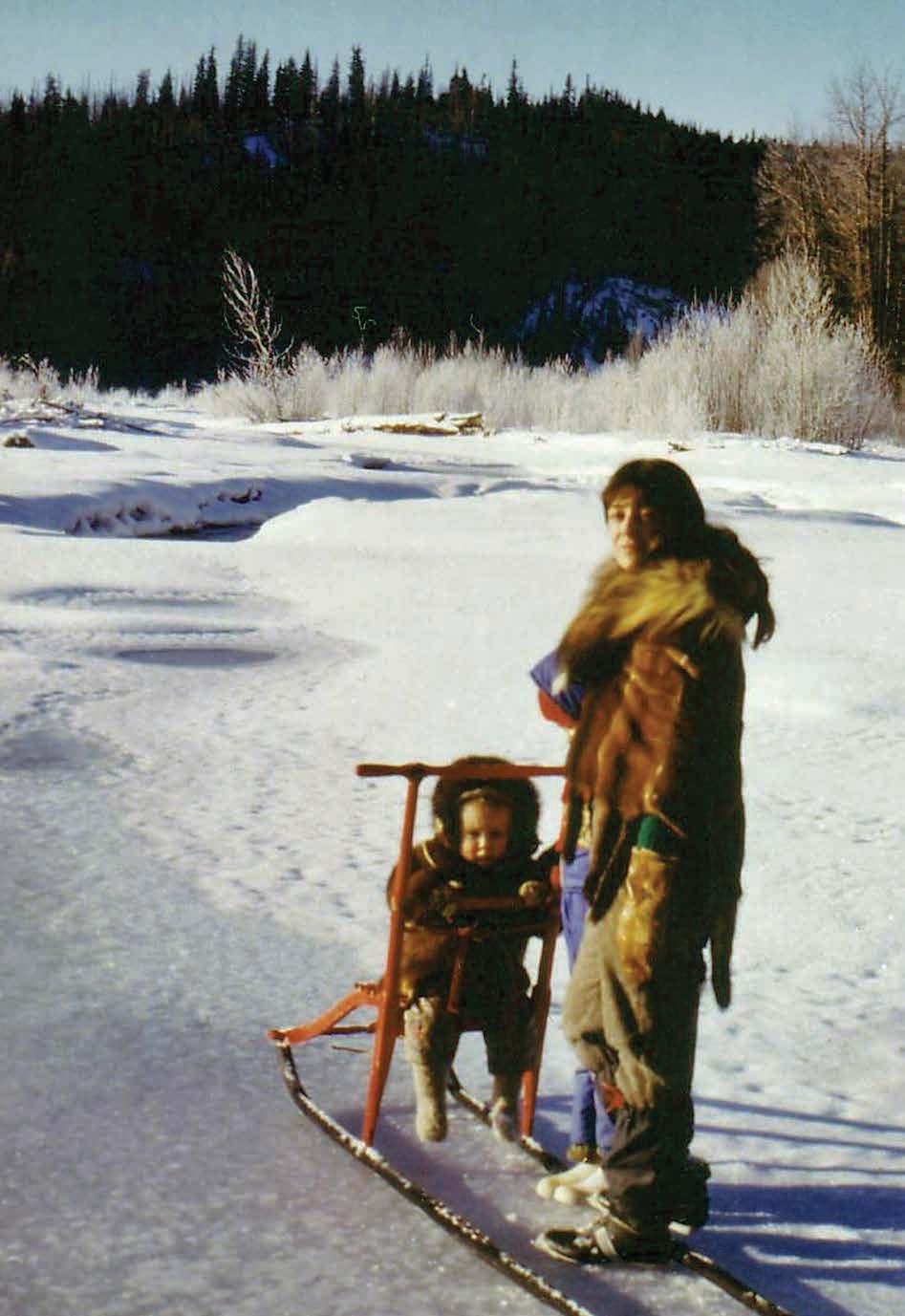
Kiksledding in the Ningunsaw Valley, northern British Columbia, circa 1980s.
Kiksledding in the Ningunsaw Valley, northern British Columbia, circa 1980s.
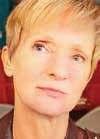

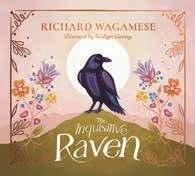


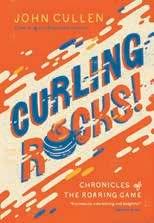
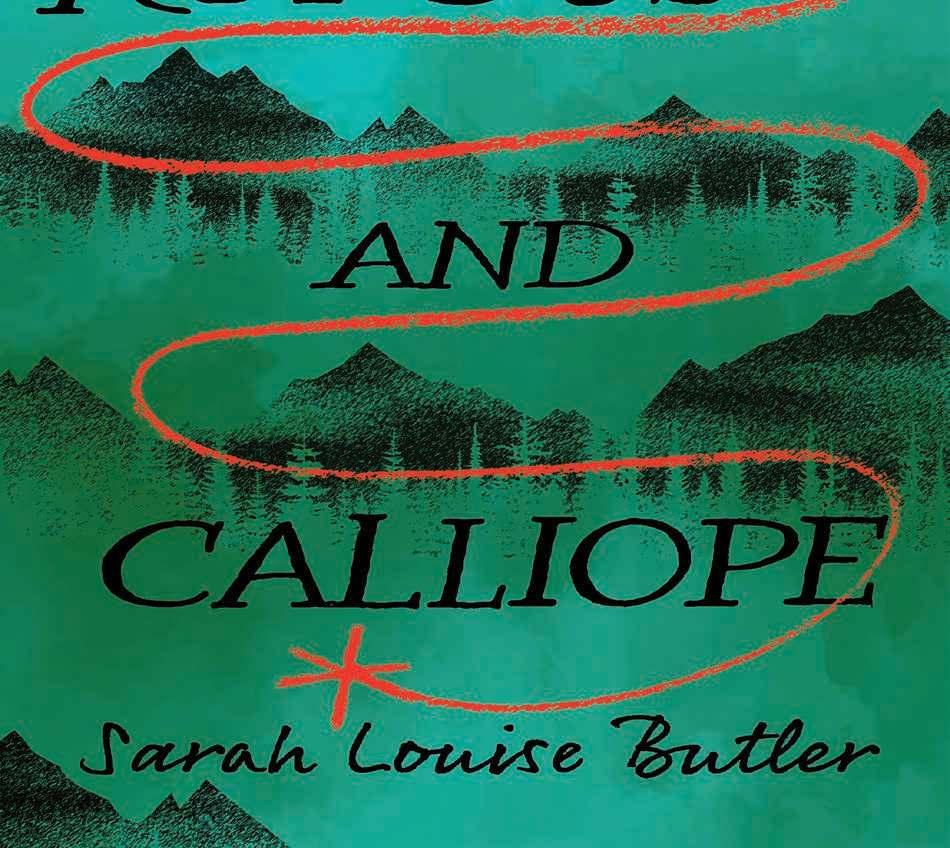
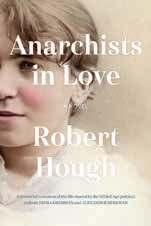

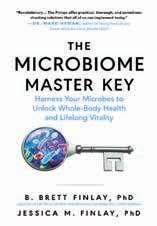
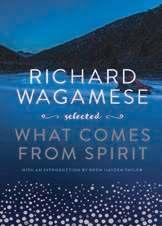
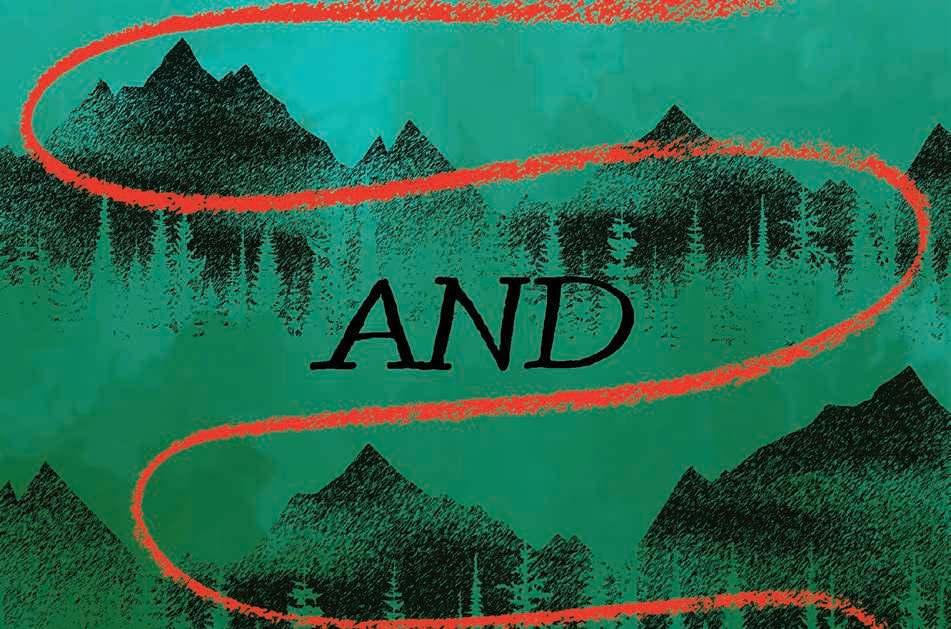
Sam
Daniel Marshall Untold Tales of Old British Columbia (Ronsdale Press $24.95)
Sarah Louise Butler
Rufous and Calliope: A Novel (D&M $24.95)

George M. Abbott
Unceded: Understanding British Columbia’s Colonial Past and Why It Matters Now (UBC Press $29.95)
Dick Beamish & Jeff Marliave Fishes of the Strait of Georgia: More than 240 Life Histories (Harbour $80)
Elspeth Hay
Feed Us with Trees: Nuts and the Future of Food (New Society $29.99)
Jenna Greene Summer of Rocks (Heritage House $12.95)
Christine Lowther Blockade: Diaries of a Forest Defender (Caitlin $26)
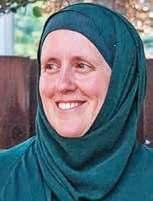
Charlene Smith Game Changers: Stories of Hijabi Athletes from around the World (Orca $24.95)
reuben quinn
kiskisomitok:
to remind each and one another (Talonbooks $19.95)
Sarah Gilbert
Our Lady of Mile End (Anvil Press $20)

Jen Sookfong Lee with her dog, Rosie.
n her fourth novel, The Hunger We Pass Down (M&S $26), Jen Sookfong Lee writes about four generations of women, two born in Hong Kong and two in Canada, all struggling with intergenerational trauma and rage.
“When is a good time to tell your daughter that your family has been cursed?” says Judy to her daughter Alice as she is about to reveal the devastating lives of their ancestors. “Your greatgrandmother, my mother’s mother, was a comfort woman during World War Two, raped by Japanese soldiers in an old, famous mansion,” continues Judy. “And then she gave birth to my grandmother just before she died.” Alice and Judy have done well in business; not so much in their personal lives. The two women continue to be hounded by suppressed pain and unresolved demons, some real and others imagined. Sookfong Lee weaves these stories across countries and time, fleshing out the disturbing lives of these women and their husbands, boyfriends and children.
Sookfong Lee says she created these characters when she “began thinking of the horrors of misogyny, of my family’s migration to Canada, of the stories that are passed from grandmother to mother to daughter.” She may draw readers to question what lurks behind their own DNA. 9780771012853

Over a period from one dawn to the next, Daniel Cowper of Bowen Island conjures the lives of various citizens who reside in an imaginary coastal city in Kingdom of the Clock: A Novel in Verse (MQUP $24.95). Each chapter, written in couplets, represents one hour of the 24-hour day. The first character we meet is Vanessa, a selfdescribed “failed actress, fine barista, washed up at twenty-nine.” In the early morning hours, she is slipping out of her lover’s place by climbing down a ladder from his balcony. Their careers are mismatched as the lover is getting richer by the day and magazines profile him as a “magnate-in-making.” Or so thinks Vanessa; yet her lover hides his own insecurities and secrets. Other characters include an aging stock promoter reflecting on his riches and wondering “what’s it all for?”; a woman tracking her husband to a casino; a binner relaxing as he watches herons lifting into the air; a jealous brother who has outed his gay sibling, the favoured son, before returning to his life on the streets. And all ponder, what’s it all for?
9780228023715

About 14,000 years ago, as the last ice age glaciers began to melt, there were no fish in the Strait of Georgia. It would take another 1,500 years for a healthy fish ecology to develop as evidenced by the discovery in 1995 near Courtenay of a seal pup fossil and the historical remains of cod, walleye pollock and salmon. The Strait of Georgia today is considered one of the world’s great fish habitats with more than 200 species. Yet, despite 70% of British Columbians living near its shores, most would be hard-pressed to name their fishy neighbours, other than salmon, herring and lingcod. Fishes of the Strait of Georgia: More than 240 Life Histories (Harbour $80) by Dick Beamish and Jeff Marliave, aims to address this lack of knowledge. Their entries lay out the life history, physical characteristics and social importance of each species, from the tiny pencil smelt to the huge (but harmless) basking shark, making this an essential reference book.
9781990776830












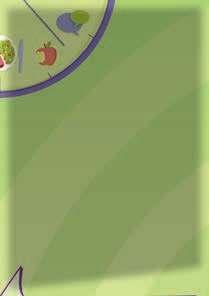














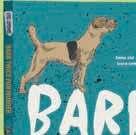
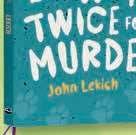














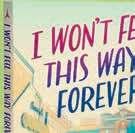

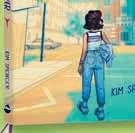

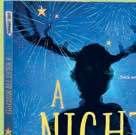







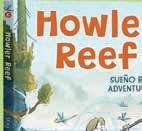


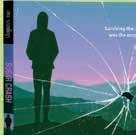

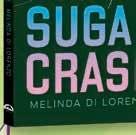


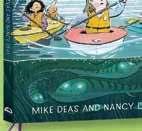



































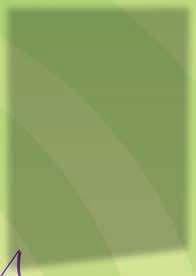
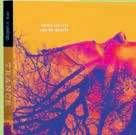

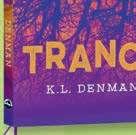



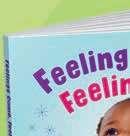
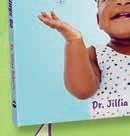


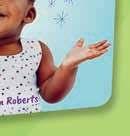
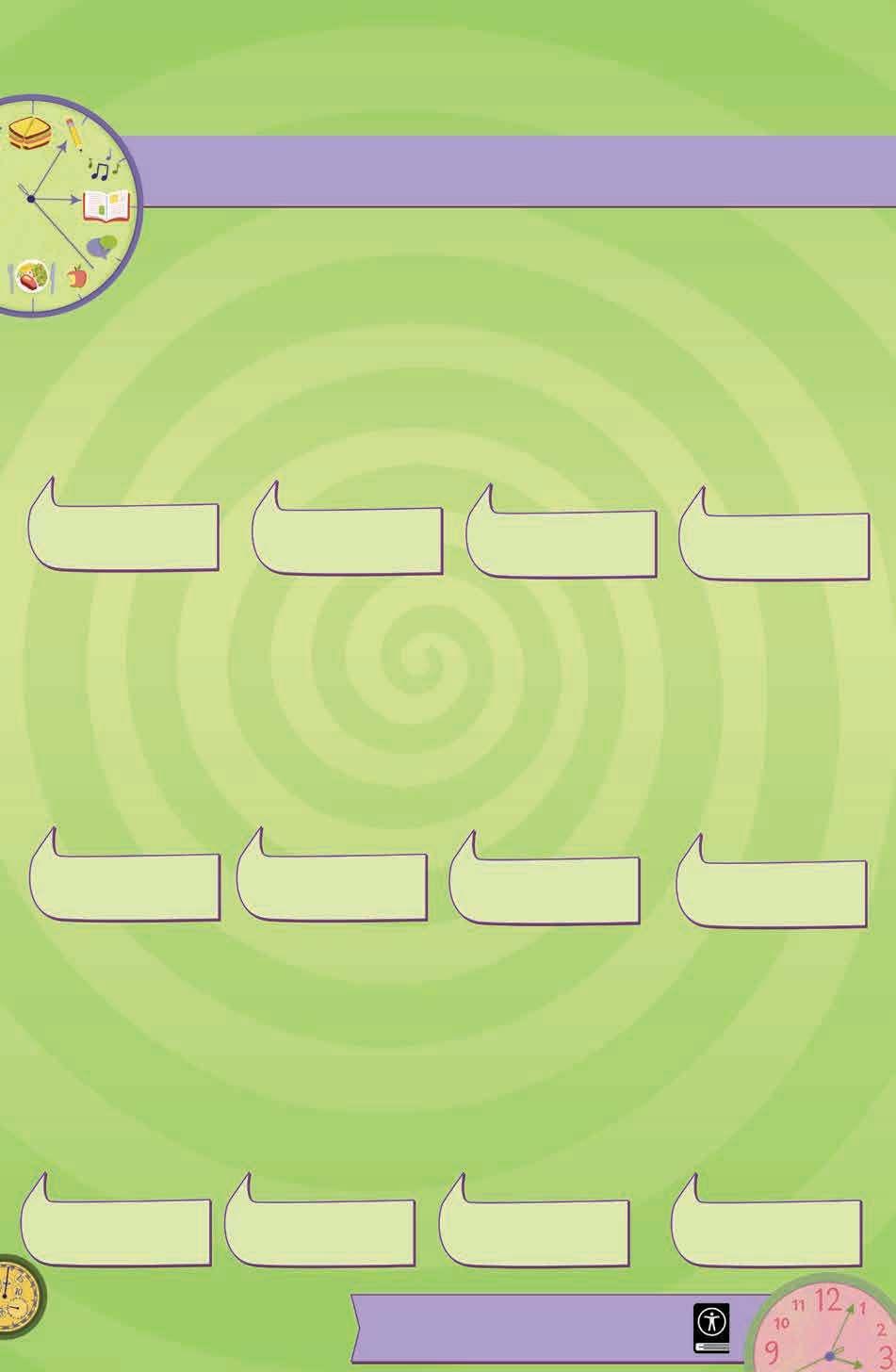

On July 23, 1941, Evelyn Kahn saw her father for the last time. The eight-year-old had been rousted from her bed along with all Jews in the town of Zhetel (now Dzyatlava in Belarus). Able-bodied Jewish men aged 16 to 60 were to be taken by the Nazi special police, the SS, for work detail. Although not chosen at first, Evelyn’s father, Moshe, decided it would be better if he volunteered. He held his little daughter in his arms whispering “My dearest child, you are my treasure,” before setting her down next to her weeping mother. Evelyn Kahn remembers
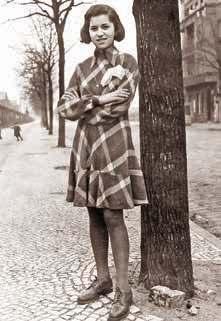
Evelyn Kahn, Berlin, 1947
he was walking away when she cried after him, “Dearest Papa, come back to us!” But he was gone. Rather than await a sure death, Evelyn’s mother, grandmother and aunt would later flee with the little girl into a nearby forest to hide from the Nazis. Remarkably they survived for more than two years in the wilderness, evading soldiers and others hunting for them as Evelyn Kahn recalls in, They Never Left Me: A Holocaust Memoir of Maternal Courage and Triumph (Ronsdale $22.95), co-written with her daughter Hodie Kahn. Evelyn Kahn is in her nineties and lives in Vancouver. 9781553807322
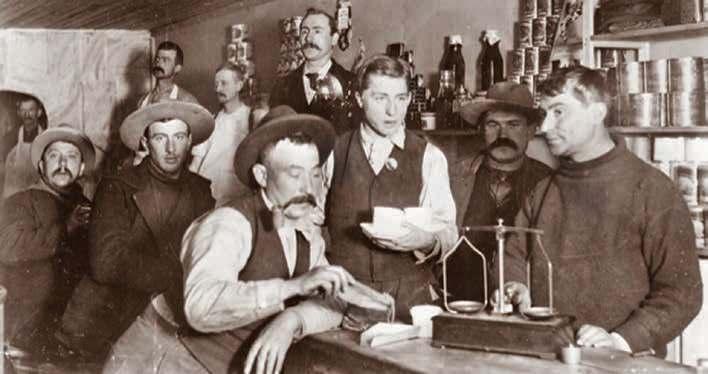
Atlin circa 1900. Every business had a set of scales at hand, as gold was the common currency used in stores and hotel bars. From Tales, Trials and Triumphs
or centuries, Aa Tlien, also known as Atlin, a hamlet in BC’s northwest corner, has been the seasonal home of the Taku River Tlingit. Settlers began arriving in the late 1800s exploring and prospecting, culminating in a flood of gold seekers starting in 1898. Many left but those that stayed learned from the Tlingit and a community evolved. Tales, Trials and Triumphs: Echoes of Atlin (Atlin Historical Society $50) by Kate Fisher and Christine Dickinson outlines this evolution with pages of historical photos, many of which have not been previously published. It also includes pictures of the early tourist era from 1911–1936 when more than 100,000 visitors came to the tiny northern community.
Another BC community that has gone from resource town to tourist destination in the past century is Vancouver Island’s Ucluelet. Shirley Martin tells of the many people who have made Ucluelet what it is today, from the pre-European-contact Ucluelet and Toquaht First Nations, and the arrival of fur traders, whalers, missionaries, loggers and fishermen in Calm Harbour, Turbulent Seas (Harbour $39.95). Her stories include those shared by First Nations; settler experiences; depictions of shipwrecks and lifeboat rescues; details of the struggle for the long-awaited road; chapters on mining, fishing and logging; the “War in the Woods;” accounts of the still-thriving art scene; and the present-day community.
Tales, Trials and Triumphs
Growing up in Prince Rupert, Diana Davidson became intrigued with boats.Withherhusband, MarkBattersby, she acquired her first boat—a cedar and canvas canoe—in 1978. Realizing they needed something safer for their kids, they bought an Avon raft, before eventually buying a string of old Zodiac boats. “Some were a bit safer than swimming, some weren’t, because when swimming, you generally have the brains not to go out too far,” says Davidson. By 1993, they were able to buy a newZodiacwitha60horsepoweroutboard. “We had scary times in the Zodiac,” says Davidson, “but we went up several inlets including the Kingcome Inlet.” Later, they purchased a wooden boat, the Liza Jane, in which they explored Jervis Inlet to Princess LouisaInletmanytimes.Davidsonamalgamatesthesejourneysofdiscoveryintoonetrip inherself-publishedbook, IsthataGrizzly IHear?PrincessLouisa&JervisInlets with Related History (Inlet Publishing $25). She wrote it for “anyone who has a boat and all thosewhodreamofhaving a boat, of being in thewilderness,ofaquiet sanctuary, with an edge ofterror.” 9798393883522
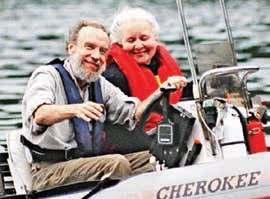
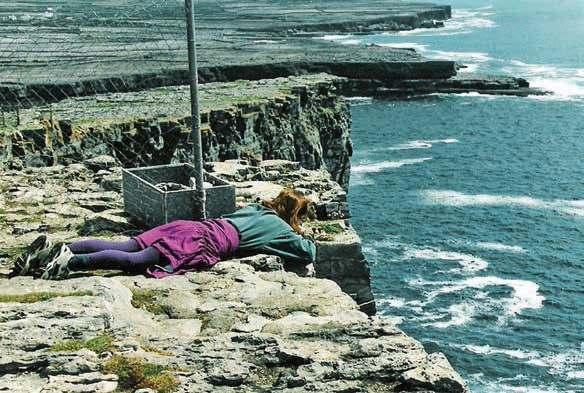
Hayes visiting Inis Mór (the
the
“I collected much research on that trip,” says Hayes, “and kept notes and journals until I was ready to write the
eirdre Ó hAodha, a teacher of traditional Irish music for disadvantaged youth in Montreal, and her favourite pupil, Éamon O’Connor, set off on a trip to Ireland to attend a scholarship recital at Cork College University in Looking for Cornelius (Resource Publications $15) by Diana Hayes Both play the fiddle; both are products of foster homes. While Éamon focuses on winning the scholarship, Deirdre looks for evidence of her great grandfather, Cornelius, who emigrated from Ireland in 1847 at the height of the Irish Potato Famine (1845–1852) when a million Irish starved and another million fled the country. Deirdre and Éamon’s travels from Dublin to Cork and further afield, complete with visits to pubs, ruins and monuments of Celtic culture, form a love letter to the Irish countryside and Irish songs. After seven books of poetry, this is Hayes’ first work of fiction. 9798385250332
Truths, Wisdom, and Love from Indigenous writers, artists, activists, and thinkers—to their ancestors, to future generations, and to themselves.
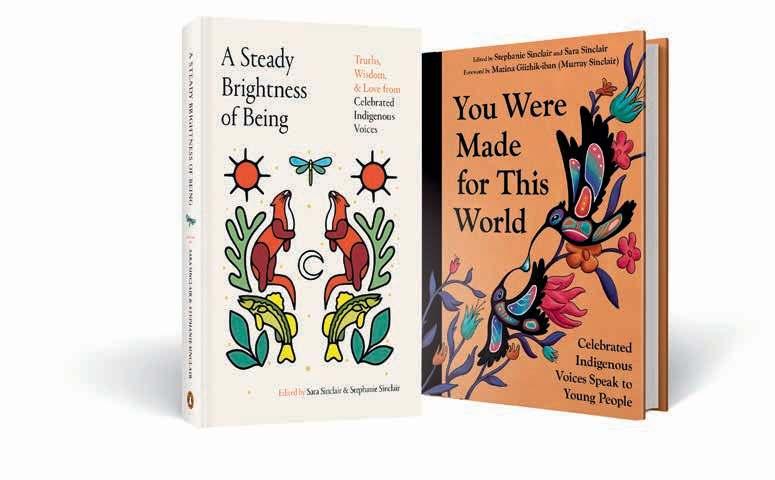
AVAILABLE NOW LEARN MORE HERE
CONTINUING STUDIES THE








Eight categories including fiction, non-fiction, children’s, illustrated, poetry, regional, booksellers’ choice, and for writing that provokes.
To submit, visit bcyukonbookprizes.com Deadline December 1, 2025



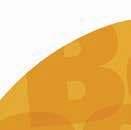
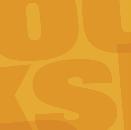

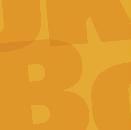



A memoir of a dream, an adventure and the unrelenting toil of life in the wilderness.
BY CAROLINE WOODWARD
So many things have changed in the world of publishing and in the life of Deanna Barnhardt Kawatski since 1994 when her bestselling memoir, Wilderness Mother, was published by Lyons & Burford in the United States. Kawatski had by then served a long apprenticeship to the craft, although eschewing a university education. She wrote continuously in several genres while travelling and working abroad for three years in the 1970s, studied in Banff with W.O. Mitchell and was a voracious reader. In her late twenties, she landed a lucrative fire tower lookout position in the wilderness of northwestern BC where she was warned to keep an eye out for a local hermit. The rest of the story, the whirlwind romance of the beautiful writer in the fire tower and the handsome hermit in the log cabin, became publishing history.
This 30th anniversary edition has been completely updated and re-edited and will be released by Vancouverbased publisher, Ronsdale Press. The former US publisher became an imprint of Globe Pequot Publishers several decades ago. Mother Earth News magazine, where Kawatski contributed a popular monthly column about her life in the bush for two years (endearing her to 500,000 subscribers), has become somewhat less earthy and more glossy but still appeals to a million subscribers, print and digital. Some of the other outdoor living and gardening magazines in North America where she sold her self-sufficiency-themed articles and which paid very well in the 1980s and 90s have folded, like Country Journal or, like Mother Earth News, have reduced their annual publishing output drastically.
But a new generation of readers, urban and rural, all of whom appreciate living more simply and in harmony with the environment, awaits this remarkable account of an adventurous young couple gaining the skills of self-sufficiency in the remote area between Stewart and Dease Lake in a valley known mostly for its name, Ningunsaw. If you are driving Highway 37 to or from the Yukon border, you will see the sign for Ningunsaw Provincial Park and ponder living near there yearround, perhaps.
In Kawatski and her husband’s day, the end of the nearest road was followed by an arduous hike, or snowshoe, through three bogs and up and
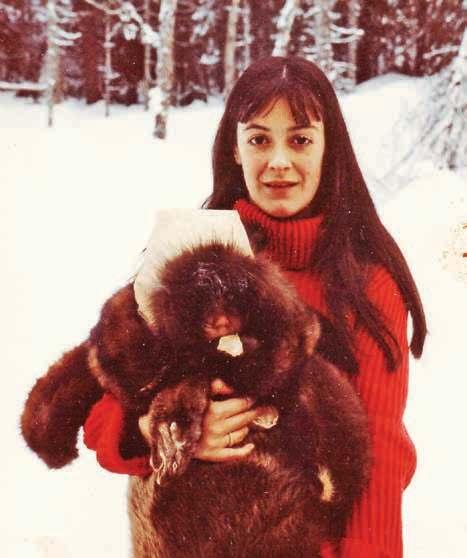
down steep slopes to reach their cabin. Today you can read this book and spare yourselves the spine-jolting potholes and millions of thirsty northern mosquitoes en route! For this edition is a much less-censored cautionary tale than the original book.
The undertaking was immense as the couple set out to build root cellars, to dig roots and rocks and dirt to develop a massive garden of more than
10,000 square metres, to grow enough vegetables and grains, raise enough chickens and rabbits and geese, and to forage, fish and hunt for at least 75% of their own food annually. They also had to build and make additions to a 12- by 16-foot log cabin and fell, peel and notch every pine and spruce log for the outbuildings. What else is there to keep the head and the heart healthy as well as the body, toughened

by relentless hard work and long hikes just to get out to make a phone call? It was their shared great passion and appreciation for unspoiled nature. Both the hermit and the writer came from farming backgrounds and were no strangers to hard work and resourcefulness. They became parents of a healthy baby girl, a home birth, nearly nine months after their wedding so that bond was strong, followed by the birth of their son in the Stewart Hospital five years later. By then, though, the cracks and fissures in their relationship were as evident as the hastily-built roads and wholesale destruction of the forests surrounding them.
“Read this book and spare yourselves the spine-jolting potholes and millions of thirsty northern mosquitoes en route!”
How she remained so joyful and engaged as a mother, so appreciative of the beauty of their surroundings and so generous and forgiving of her husband for so long is a testament to her strength of character. How she managed to keep writing, rising at 4:30 a.m. when she wasn’t exhausted by the demands of child rearing and her staggering workload, and despite her husband’s increasing derision and harsh criticism, is yet another sign of her strength. As his mental health deteriorated (evidenced by him writing her publishers telling them not to publish her book—a directive they ignored) her intention to do the best for her children and eventually, finally, for herself, only grew more determined. The enduring support of her mother and sister and certain angels in the form of observant neighbours and swift-acting social workers will reaffirm readers’ faith in the goodness, and courage, in most hearts and minds.
9781553807308
Caroline Woodward grew up on a Peace River homestead and gleefully fled a life of picking roots and rocks in order to earn a BA at UBC and a creative writing diploma from David Thompson University Centre. Have You Ever Heard a Whale Exhale? (Pownal Street Press/Raincoast) is her latest book for children.
by Anna Maskerine (Caitlin $26)
BY SONJA PINTO
Warning: The following story deals with domestic violence and violence against women.
Their future location known only to a trustedfew, Anna Maskerine and her young child left everything behind fleeing a dangerous relationship, as she chronicles in her hardhitting collection of short vignettes and poems, Beneath My Scars. Now, with her son fully grown, Maskerine shares her unwitting entrapment by an abusive partner, her escape to a new life in Nelson and the healing that followed the harm.
Details of the time with her abuser are harrowing. Maskerine diligently double-checked locked doors only to have her windows smashed in by his forced entry. There was the night her abuser came home drunk in the night and smothered her with a pillow only to brew her coffee in the morning and kiss her on the cheek as if nothing had happened. Like clockwork, he apologized profusely after the violence only to perpetrate more violence a week later. Yet, on the surface, her abuser was charming, even sweet, to those around them.
“Statistically, a woman is assaulted thirty-five times before reaching out for help, and she leaves seven times on average before leaving for good,” writes Maskerine. Since escaping her abuser, Maskerine has forged a career working in transition houses helping women leave situations that resemble her past. Once in Nelson, Maskerine eventually began working at the Aimee Beaulieu Transition House when it opened in 1995, and was a program manager there for thirty years. Her personal experience with domestic violence shaped her work: “The ideas and decisions that were forming the program in Nelson were being grounded in real experiences: mine, the voice of a survivor. My own history gave an insight into what at least some, if not all, of the women could feel when reaching out to us for support. I wanted to make sure we reached back in the most supportive way.”
Maskerine offers valuable insights into the vital programming of the transition house. “Our work would be client driven, woman focused, and trauma informed,” she promised. Moving beyond her own experiences, she also helped develop culturally-specific services to support Indigenous women who have even higher rates of domestic violence.
Anna
’s stunning memoir of resilience, strength, healing and escaping domestic abuse.
memories with her abuser are filled with sweet dates, flowers and flattery: “It was like he was two different people.” Maskerine’s disbelief is palpable. “How did I become / the face to your fist”? asks one poem.
“I’ve looked back to the beginning as if on an expedition to unearth the signs, some red flags or warning signals that could have averted everything that happened next. I know that sometimes the sound of your heart is so loud, you can’t hear the freight train that’s headed straight for you,” writes Maskerine. Indeed, the abuse began with relatively innocuous incidents like her abuser taking her wallet from her bag without asking. Eventually, the abuse escalated to him taking away her birth control pills and verbally threatening her physical safety.
Extreme manipulation became normalized without Maskerine even
realizing it: “I had no control over anything: who I saw, where I went, what I ate, what I wore, the money I made.” This control extended beyond their household, with “rules for being out in public.” At restaurants, she “was to make no eye contact, keeping my eyes only on him and my head down. He would order for us both, and he would always add a beer for himself.”
Over time, Maskerine became isolated from friends and family, and her abuser limited her phone use. “When I was with him, I hardly ever let thoughts of leaving enter my mind for fear that he’d somehow know what I’d been thinking and planning. I was totally consumed by fear then—paralyzed by it, more truthfully.”
Maskerine describes the psychological trauma that she developed such as hypervigilance, hearing every sound in the house from a window cracking open
to smelling alcohol on her abuser’s breath before he entered a room. Hypervigilance is a form of protection for those experiencing domestic violence. “Knowing where he was, what his mood was like, helped me to predict what might come next, prepare for it, and know where we were in the steadily turning cycle.”
But freedom seemed to whisper to Maskerine. “The sound of safety / Travels on the wind,” she writes in a poem. Her life after escape became a quest for autonomy. “Healing for me didn’t mean the damage never existed. It meant that it no longer controlled every part of my life,” she says.
Maskerine leaves her abuser unnamed for the entirety of Beneath My Scars, but she emphasizes her son’s birth as what ultimately saved her, giving her the strength to leave and start a new life. With this strength found in motherhood, Maskerine began to rebuild: “Wisdom is nothing more than healed pain.”
Why tell her story at all? “Shame dies when stories are told in safe places,” says Maskerine. “Part of healing is telling the truth about what happened to you.”
Her memoir is a stunning story of resilience, strength and healing. “Even in the worst situations, there is always hope,” she says. “Just like the wildflowers that bloom in unexpected places, between cracks on sidewalks and stone-covered paths, on rocky hillsides and burned forest floors, you can regain enough of yourself to start again.”
9781773861593
Sonja Pinto is a writer, photographer, printmaker and book reviewer. They reside on the unceded territories of the lək̓ʷə
ən peoples (Victoria, BC).
“Even in the worst situations, there is always hope.” Anna Maskerine
Maskerine’s story demonstrates how easy it can be to slip into a dangerous partnership. “Our time together didn’t start out as abusive. Quite the contrary,” she recalls. Her earliest
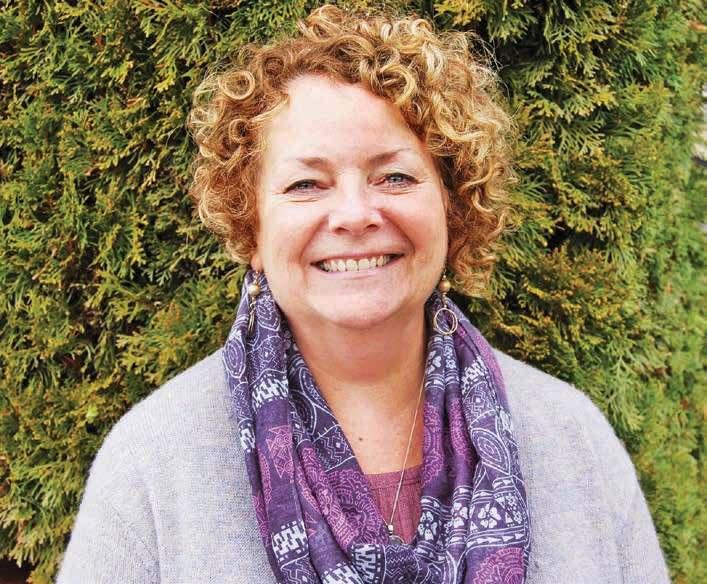
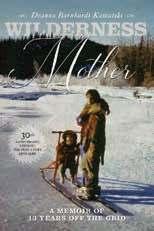
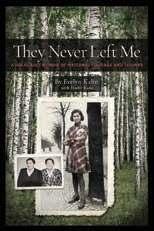

A Memoir of 13 Years Off the Grid
Deanna Barnhardt Kawatski
30th anniversary re-issue of the wilderness classic of living in the remote wilds of BC. Deanna and her husband Jay built a life in the stunning beauty and staggering isolation of the Ningunsaw Valley.
“Deanna Kawatski’s hope-filled, generous and joyous voice deserves its resurgence.”
—WAYNE JOHNSTON, author of Jennie’s Boy and A Colony of Unrequited Dreams
A Holocaust Memoir of Maternal Courage & Triumph
Evelyn Kahn with Hodie Kahn
The dramatic story of nine-year-old Evelyn’s survival in the dense forests of Belarus.
Evelyn’s idyllic childhood is shattered by World War II. Evelyn, her mother and grandmother endured brutal ghetto liquidations and two relentless years in the forest battling starvation, illness, bitter cold and the ever-present shadow of capture.
978-1-55380-732-2 | 6 x 9 | 200 pp $22.95 | TRADE PAPER
A Gardener Discovers the Gentle Art of Untravelling
Elspeth Bradbury
BC BESTSELLER!
A great gift for the gardener in your life. Inspired by world travellers, Elspeth sets out to explore the world that exists in her own back garden.
“Her wry sense of humour, often self-deprecating, makes for a highly-relatable travel guide. Highly recommended!” —BC BOOKWORLD
978-1-55380-724-7 | 6 x 7.5 | 238
WINNER: MANITOBA HISTORICAL SOCIETY’S MARGARET MCWILLIAMS AWARD FOR POPULAR HISTORY
Treaties, Lies & Promises
How the Métis & First Nations shaped Canada
Tom Brodbeck
NOMINATED: BILL DUTHIE BOOKSELLERS’ CHOICE AWARD Untold Tales of Old British Columbia
Daniel Marshall
NATIONAL BESTSELLER!

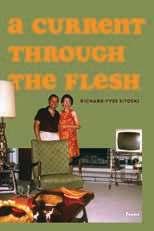
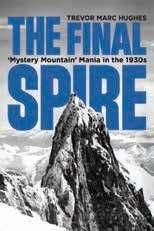

A riveting account of the links between the Red River Resistance and the numbered treaties.
978-1-55380-716-2 (PB)
978-1-55380-717-9 (EBOOK)
6 x 9 | 202 pp | $24.95
A collection of fascinating stories of the extraordinary and astonishing in B.C.’s history.
978-1-55380-704-9 (PB)
978-1-55380-705-6 (EBOOK)
6 x 9 | 330 pp | $24.95

Dania Suleman
Translated by Nouha Gorani-Homad
A fresh view on the debate between religious freedom and protecting women’s rights.
Inspired by Quebec’s controversial Bill 21, which bans the wearing of religious symbols by civil service employees and teachers in the public sector, Dania argues that freedom of religion and gender equality can be reconciled to develop understanding, encourage community and embrace difference. 978-1-55380-734-6
Richard-Yves Sitoski
A poetry collection that weaves family history into an abrasive cloth, tailored into the full regalia — pre-moth-eaten and torn — of everyday life.
“This book is haunted and just as often hilarious, underscoring the return of what will not leave easily.”
—TANIS MACDONALD, author of Mobile: poems
978-1-55380-736-0 | 6 x 9 | 124 pp | $18.95 | TRADE PAPER
the 1930s
Trevor Marc Hughes
NOMINATED: SUNSHINE COAST WRITERS & EDITORS SOCIETY AWARD FOR NON-FICTION
For fans of adventure and survival stories. In 1934, four mountaineers headed to British Columbia. Their goal? To conquer BC’s tallest mountain.
“A chronicle of fascinating history and good oldfashioned chutzpah.” —VANCOUVER SUN

NOMINATED: BC BOOK PRIZES’ ETHEL WILSON AWARD FOR FICTION
Deirdre Simon Dore When a stranger knocks on their door Frida and Blake’s lives are devastatingly changed forever.
978-1-55380-710-0 (PB)
978-1-55380-711-7 (EBOOK) 5 x 8 | 370 pp | $25.95


NOMINATED: GEORGE RYGA AWARD FOR SOCIAL AWARENESS IN LITERATURE / WESTERN CANADA JEWISH BOOK AWARD FOR FICTION
Keefer Street
David Spaner
Jake’s rabble-rousing street politics lead him to join volunteers fighting in the Spanish Civil War. 978-1-55380-720-9 (PB) 978-1-55380-721-6 (EBOOK)
5 x 8 | 320 pp | $24.95

the antifa comic book Revised & Expanded
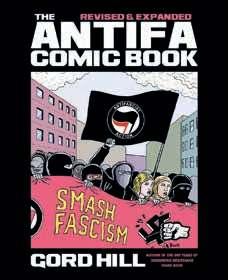
a perfect day for a walk by the water
Exploring Vancouver’s Shores
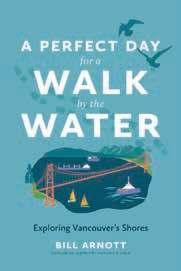
By the author of bc bestseller
A Perfect Day for a Walk: a personable, informative guide to Vancouver by way of its waterways and coastlines. “Like a walk-and-talk with a trusted friend, Arnott invites readers to rediscover Vancouver’s shorelines with a fresh perspective and quiet wonder.”
—Jill Heinerth
978-1-83405-020-1
With fascism in our midst, Indigenous artist Gord Hill ( e 500 Years of Indigenous Resistance Comic Book) revisits his brilliant graphic history of fascism and anti-fascist movements. Featuring a new foreword by Mark Bray, author of Antifa: e Anti-Fascist Handbook
978-1-83405-004-1
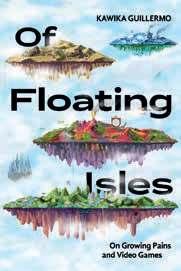
An immersive journey into the author’s lifelong attachment to video games, revealing how they shape us, shatter us, and give us the courage to start again. “A uniquely incisive, courageous, and moving book about a chronically misunderstood form of culture and experience.” —David Chariandy
978-1-83405-006-5
REAL ENOUGH: THE UNLIKELY STORY OF DOUG & THE SLUGS
by AAron ChApmAn And Simon KendAll
Doug and the Slugs carved out a unique spot in the North American music scene after first appearing in Vancouver BC in 1977. Too polished to be punk and too irreverent to be slick radio rock and roll, they quickly became hometown favourites. Through a hard-won, rigorous touring schedule, a bar band suddenly found themselves Gold record holders, seemingly beloved from tot to pensioner—a career trajectory almost unheard of today. This is their story.
$25 | muSiC | 256 pAgeS | 978-1-77214-221-1 | oCtober — preViouSly AnnounCed
A SIGN OF THE TIMES: THE BEST OF THE PENTHOUSE MARQUEE
by benJAmin JACKSon With AAron ChApmAn
The Penthouse Nightclub has been the home of some of Vancouver’s naughtiest behaviour, but lately it’s the nightclub’s neon marquee that’s become the talk of the town — going viral on social media and being mentioned on talk shows and news reports around the world. Through archival photos, interviews and memories from staff, A Sign of the Times showcases a look back on a unique and irreverent icon that has unexpectedly become a modern expression of Vancouver itself.
$36 | photoeSSAy | 176 pAgeS | 978-1-77214-250-1 | oVer 100 imAgeS (Colour & b/W) | noVember
POOLS (A noVel)
by mArtin WeSt
“Anyone who wanted to be anybody in Vancouver had a pool by the summer of ’83.” Thus sets the scene for Pools, a novel that delves into themes of excess through the lens of the 1980s party culture. Shot through with irony and black humour, it weaves a rich tapestry of human experience, illustrating the often tragicomic elements of this thing we call life.
$22 | noVel | 224 pAgeS | 978-1-77214-244-0 | AVAilAble noW
CARTHAGINIAN PEACE & OTHER STORIES
by eVie ChriStie
The stories in Carthaginian Peace & Other Stories are centred in the domestic and everyday. They follow youngish lovers and domestic partners attempting to find a cure for a cosmic loneliness in an unstable society. Mothers spurn guilt, couples seek pleasure alone, and friends sit topless in parks, slack off, or dream about building a shipping-container home, and look to the sky hoping to find a place for people like them.
$20 StorieS | 160 pAgeS | 978-1-77214-212-9 | oCtober
NIGHT MOVES: THE STREET PHOTOGRAPHY OF RODNEY DECROO
ForeWord by miKe uSinger
Rodney DeCroo’s street photography project, Night Moves, is a gritty, touching, poignant, and truthful portrayal of contemporary urban life. With his poet’s eye for detail, he faithfully captures the living character of East Vancouver, especially the life and pulse of the Commercial Drive area that he has called home for the past thirty years.
$40 | photogrAphy | 160 pAgeS | 978-1-77214-239-6 | AVAilAble noW
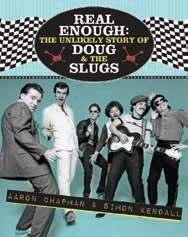
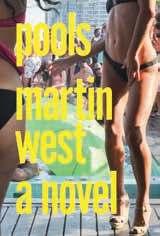

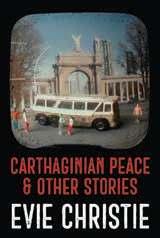
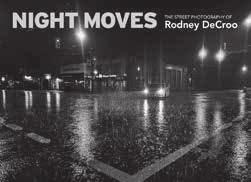
Indigenous Rights in One Minute: What You Need to Know to Talk Reconciliation by Bruce McIvor (Nightwood Editions $22.95)
BY ODETTE AUGER
In a time of performative reconciliation, Bruce McIvor’s Indigenous Rights in One Minute is a tool to cut through confusion. A compact 224 pages, this is a book to keep close at hand for navigating conversations and misconceptions based on prejudice.
McIvor is a lawyer, historian and professor, but Indigenous Rights in One Minute is written in plain language for every reader to dig into all the questions. He includes basic queries such as “Why do Indigenous people have special rights?” and “Why don’t Indians pay taxes?” to more complex issues. McIvor makes it easy to understand Aboriginal law decisions and why they’re important, such as the Delgamuukw decision, treaty rights, duty to consult and accommodate, and more.
What really shines is McIvor’s open declaration of subjectivity: “I have no pretensions of being impartial,” he says. The result is a legal primer that serves as a public reckoning in a compact format. This small elegant book isn’t a detached overview; it’s advocacy in action.
McIvor draws on three decades of working as a lawyer and educator to identify the most frequent questions Canadians ask, and answers each with unusual clarity and brevity. His responses challenge readers to consider the colonial foundations of Canadian law, such as the Doctrine of Discovery— which McIvor refers to as “Canada’s rotten foundation”—revealing how its enduring influence contaminates modern legal frameworks.
“The often-used phrase ‘assertion of Crown sovereignty’ is a Canadian euphemism for the Doctrine of Discov-
Bruce McIvor’s book is for anyone tired of half-truths, policy platitudes and government apologies that don’t translate into action.

ery,” says McIvor pushing the reader to question language that has normalized conquest.
McIvor’s style can be trenchant, but is always accessible. For example, when responding to “Why don’t Indians
Bruce McIvor (a member of the Manitoba Métis Federation): “The work we do as lawyers is based on humility — excellence through humility is important.”
pay taxes?” he says that the “lie that Indians don’t pay taxes is a tool used to oppress and marginalize Indigenous people. The fact that it’s commonplace across the country illustrates the continued acceptability of racist stereo-
“From city buses to university lectures to parties, I can’t count the number of conversations where Bruce McIvor’s answers would have immeasurably helped me to counter myths, call out stereotypes and focus on the facts about Indigenous rights.”

types,” explains McIvor.
The structure itself is brilliant: oneminute answers followed by concise legal context making the book something I wish I had decades ago. From city buses to university lectures to parties, I can’t count the number of conversations where Bruce McIvor’s answers would have immeasurably helped me to counter myths, call out stereotypes and focus on the facts about Indigenous rights.
Reading and reflecting on these questions brings a receptive reader to a different space and helps us consider how colonialism is masked as law.
The section I read more than twice tackles cumulative resource extraction by showing how dozens of permits granted in isolation can extinguish rights that were never meant to be eroded piecemeal. “Death by a thousand cuts,” McIvor calls it, exposing how bureaucratic processes become tools of dispossession.
McIvor’s nuanced discussion of Métis identity fraud, Indian Act band governance and section 35 rights offers a clean way to frame conversations that avoids sensationalism of “pretendianhunting” while reinforcing the political weight of recognition.
From non-Indigenous Canadians asking how they can “do the right thing,” to Indigenous folk navigating misinformed questioners, this book is for anyone tired of half-truths, policy platitudes and government apologies that don’t translate into action.
Indigenous Rights in One Minute is essential for classrooms, boardrooms and my kitchen table.
Bruce McIvor’s refusal to pretend neutrality makes this book trustworthy. Surrounded and dominated by colonial frameworks, clarity is radical. 9780889714885
Odette Auger, award-winning journalist and storyteller, is Sagamok Anishnawbek through her mother and lives as a guest in toq qaymɩxʷ (Klahoose), ɬəʔamɛn qaymɩxʷ (Tla’amin), ʔop qaymɩxʷ (Homalco) territories.

BY GENE HOMEL
When King Charles III delivered the Speech from the Throne to Canada’s Parliament on May 27, 2025 he highlighted two key aspects of Canadian life: the historic connection with the Crown and the role of the Indigenous peoples of Canada. He hoped “that a path is found toward truth and reconciliation, in both word and deed” and he announced the new government’s approach to nation-building projects as always being “firmly guided by the principle of free, prior and informed consent.”

Jim Reynolds’ Canada and Colonialism: An Unfinished History is both timely and grounded in history. This wellresearched and incisive book tells two different stories: Canada’s role in the British Empire and the fate of Canada’s First Nations people. The two parts are tied together by Reynolds’ assertion that the oppression of Indigenous people was the outcome of colonialism in Canada, a product of the colonial rule of the British Empire.
Reynolds worked locally as a lawyer for First Nations for over 40 years, including as general counsel for Vancouver’s Musqueam Band. A Musqueam case obtained a legal remedy for breach of duty by the Feds in managing reserve lands, one of many legal cases Reynolds details that enlarged the “significant gains for Indigenous peoples,” but still left intact “the fundamental colonial relationship” between First Nations and governments. He is the author of Aboriginal Peoples and the Law (UBC Press, 2018) and holds a PhD from the London School of Economics.
canada’s growth “from colony to nation” was a traditional cliché of teaching and writing about Canadian history—something that has changed the last several decades—and Reynolds briefly tells this story. He takes a more global view of “empire”, and considers dependent colonialism in India and Africa as despotism. But the “white” settler colonies of Canada, Australia, New Zealand and South Africa were different. These settlers arrived
Jim Reynolds’ in-depth dive into Canada’s past as a colony of Britain, the settler-led internal colonialism behind the Indian Act and its longlasting impact on Indigenous peoples.
to stay and build new societies that evolved into independent states with a majority “white” population.
Reynolds’ Indigenous focus is on how the securing of rule over Canada’s First Nations occurred and the legal and political consequences of that rule. White settlement, treaty making and occasional brute force (such as during the prairies’ Northwest Resistance of 1885) were underscored by attitudes of cultural and technical superiority, a “civilising” mission and outright racism. The book surveys the ideas of British Imperialism in Canada—not what we today think of as imperialism, but instead a specific belief from the early 1800s until the mid 1900s in the
virtues of the British Empire.
“For the bulk of its history, and to an extent that is difficult to imagine today, Canada considered itself ‘British’ and a part of the ‘British World,’ consisting of the ‘mother country’ in Europe and other ‘British’ settler colonies,” writes Reynolds.
The internal colonialism that Reynolds says led to so much harm to First Nations rested primarily on the Indian Act of 1876 and its evolving amendments, a system of Indian agents and the residential schools system. While formerly dependent colonies in Asia and Africa achieved independence from Britain after World War Two, Canada’s Indigenous peoples remained highly
disadvantaged wards of the state. Reynolds’ strongest content is his detailing of the legal cases and decisions and government policies that have granted what he says are significant gains, though he claims that “the shadow of the Empire remains.”
Oreynolds’ account is open to some criticisms. It’s curious that he does not mention the United States in the context of colonialism, given Canada’s evolution “from colony to nation to colony.” Canadian history is partly a tale of achieving some degree of freedom from American influence and dominance from the 1770s to the present, a story that ranges from outright American invasion to cultural, economic and resource ownership or control. Reynolds misses that Canadians’ British Imperial pride, among other positive aspects for Canadians of the Imperial tie, served as a counterweight to American imperial expansion.
Attributing oppression of First Nations to the “empire” is questionable. For example, the United States’ treatment of “Indians” did not have the “benefit” of the British tie, yet was much more murderous than in Canada.
Oas for indigenous relations , Reynolds does not fully admit the active agency and power of native peoples (who desired technology in the form of trade goods), especially until the decline of the fur trade and the rise of western settlement in the 1870s and 1880s when Canada needed to extend its infrastructure to hold off annexationist pressures from the US. Marriage and kinship ties with “whites” and the presence of the Métis played a mitigating role in this earlier period.
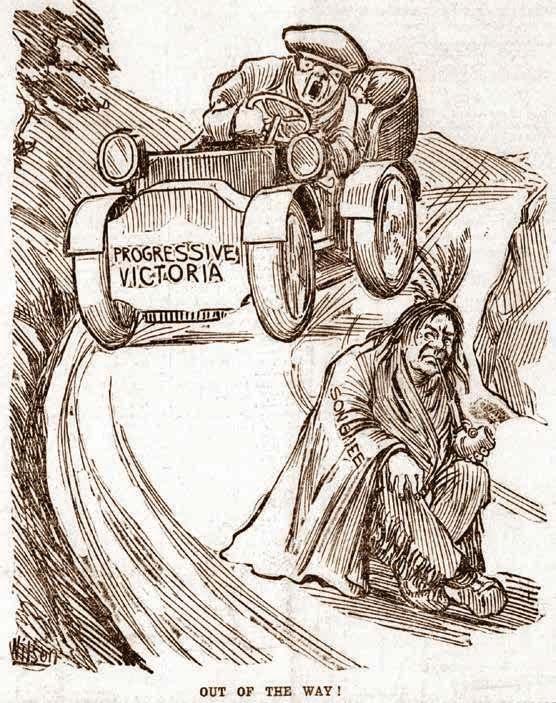
Finally, Reynolds asks what should be done about the “profound impact” of colonialism. Aside from removing statues of John A. Macdonald, renaming Tweedsmuir Park and discussing an end to the Crown as head of the Canadian state, he asserts the need for “decolonization,” coupled with the “right to selfdetermination” and “Indigenous nation-building in Canada” for people with no “recognized” sovereignty. “Self-government for Indigenous peoples in Canada has still not been fully recognized,” he writes. Like the newly minted cliché of “settler colonialism,” these points are problematic. What exactly would self-determination, sovereignty and nation-building look like? The courts have placed hedges on Indigenous self-government, as Reynolds mentions. Is he opposed to those limits?
Reynolds has done readers a fine service by offering a recommendable, clear, readable survey of the background to the truth and reconciliation mandate. King Charles would probably enjoy the book’s Indigenous content; the rest much less so.
9780774880947
Gene Homel has been a faculty member at universities, colleges and institutes since 1974 teaching Canadian history and politics.
“One of the most fascinating and important figures in Holocaust history.”
— Christopher R. Browning
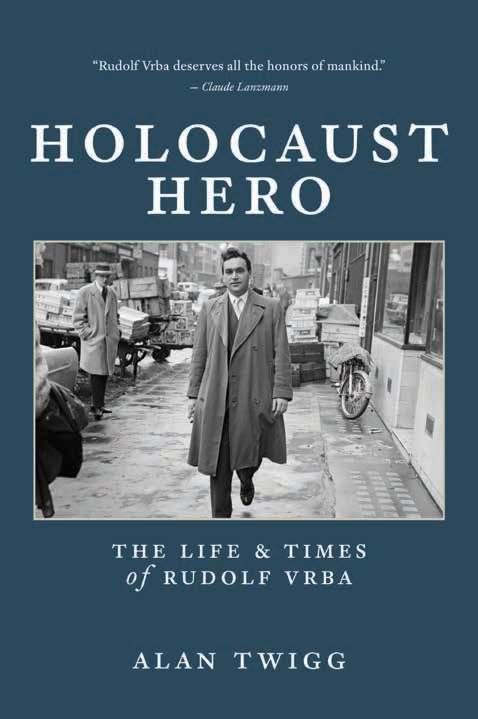


Rudolf Vrba. Born Walter Rosenberg, he was captured at 17 and sent to Auschwitz. Fluent in several languages and living by his wits, he survived — and was one of only a very few to escape, in a daring plan that improbably succeeded. In 1944, he helped save 200,000 Hungarian Jews. This is his story.
A UBC professor and Vancouverite from 1973 to 2006, Rudolf Vrba was brilliant, amusing, loved and hated. Read the revelations and tragedies in this biography by his friend, Vancouver’s Alan Twigg.
“Compared to his adventures, The Great Escape is a fairy tale.”
—Elie Wiesel
Published by
302 pages with photographs, paperback, $29.95 At bookstores and online fireflybooks.com

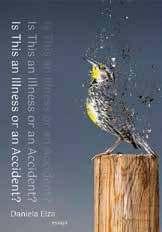
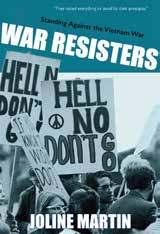
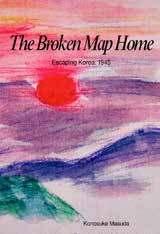
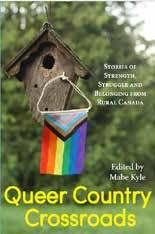
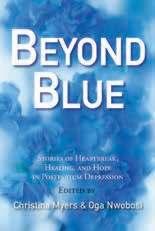


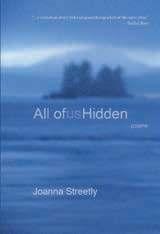
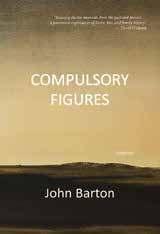

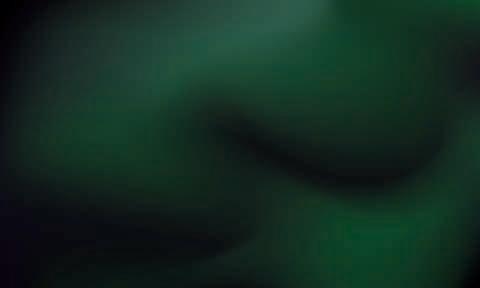
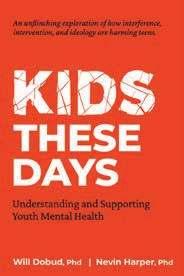
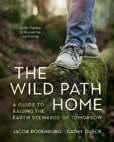

Kids These Days Understanding and Supporting Youth Mental Health
WILL DOBUD, NEVIN J. HARPER
Our kids aren’t broken. But the system is. Let’s change the story. A fresh, provocative look at the challenges facing our kids in today’s world.
–Alex Hutchinson, New York Times bestselling author, Endure and The Explorer’s Gene

The Wild Path Home
A Guide to Raising the Earth Stewards of Tomorrow
JACOB RODENBURG & CATHY DUEK
This is my new go-to guide. What a treasure!
–Cathy Jordan, PhD, Director of Research, Children & Nature Network
Coming Together in The Great Turning
Collective Liberation and Work That Reconnects
ARAVINDA ANANDA, MOLLY YOUNG BROWN, KURT A. KUHWALD
The Work That Reconnects, Continued. Fresh guidance for justice, healing, and collaborative action in today’s world.

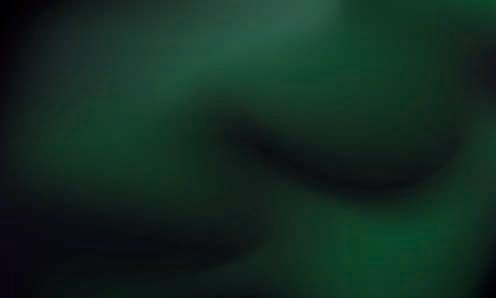


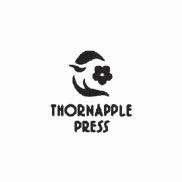
Salt Green Death by
Katarina
Thorsen (Conundrum $30)
BY MICHAEL KLUCKNER
With Salt Green Death, writerartist Katarina Thorsen has blended “creative non-fiction” (as she describes her work) with the visual possibilities of the graphic novel—that is, of the “comic book with pretensions” that offers a multidimensional experience to readers brave enough to study and absorb it. Unlike many popular graphic novels, such as Kate Beaton’s Ducks: Two Years in the Oil Sands (D&Q, 2022), Thorsen steered away from the numbing convention of talking heads—page after page of balloons of dialogue with little visual variety—and has instead created colourful collages that challenge the reader to slow down and experience the depth of the story she’s telling. She plays with the genre, including a drawing on the title page of an old-fashioned “pocket” with a “Due Date” and “Issued to” card on it from the Vancouver Public Library.
Salt Green Death is one of many phrases from the novel Ulysses by James Joyce. Other quotes from that work dot the pages. There are repeating visual metaphors such as small birds— some alive, some dead—and vicious red foxes. A couple of Mason jars, one containing a black butterfly, hint at the containment her subject suffers.
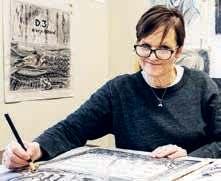
Chapter One, “Salt,” begins the story with the attempted suicide of Joseph O’Dwyer in Kitsilano Pool in 1948. He was distraught following the suicide of his older sister, Molly, who jumped to her death from the Georgia Viaduct, and the earlier deaths during war service of his two brothers. Joseph is sent to Essondale Mental Hospital (more recently known as Riverview) where he endures an A-Z of the cruel treatments of the day: first, insulin coma therapy (which caused him to gain 50 pounds, scream and weep) then electroconvulsive therapy. His parents have to approve each treatment, and the book details both their and Joseph’s responses in handwritten notes “pasted” onto the complex drawings. He escapes in 1951, imagines himself as a bird, but quickly returns to the asylum. In 1954 he is given a lobotomy but remains irritable and combative, resulting in treatment with the antipsychotic medication Thorazine. He is labelled “schizophrenic.” Two years later he’s sent home but his parents,
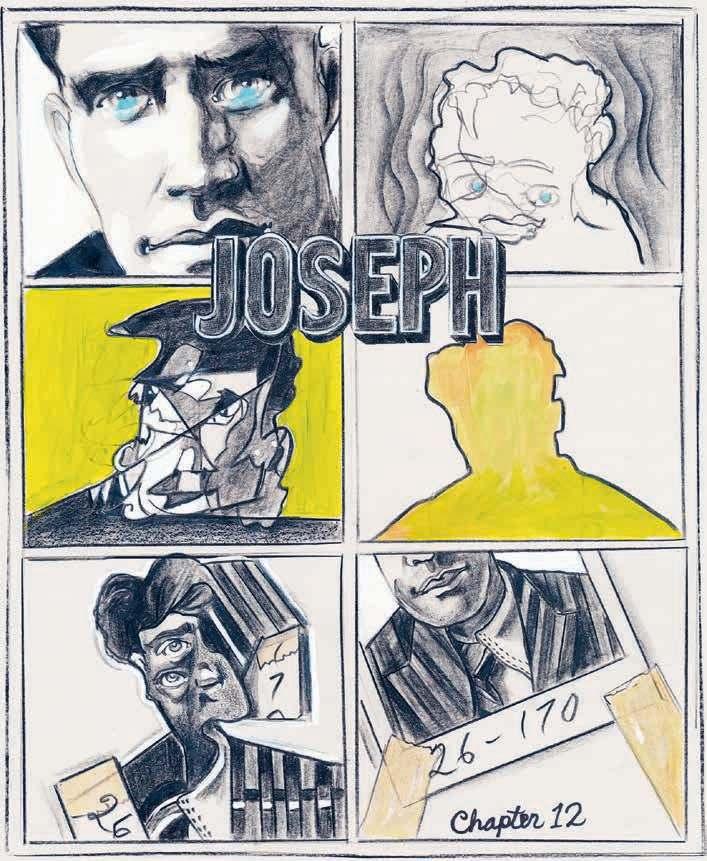
The harrowing true story of Joseph O’Dwyer and his tragic life in mental hospitals.
though steadfast in their support, are unable to handle him. He is transferred to the now-infamous Colquitz Mental Home for the criminally insane in Saanich, where he’s placed in seclusion after attacking another patient. The story doubles back to his family life in Chapter Two, “Green,” and continues to explore the family history without following a strict chronology in the third chapter, “Death.” Colquitz comes under increasing scrutiny in 1956 for
its nightmarish conditions. Four years later, Joseph’s father tries to get him released, his mother dies of cancer, Joseph returns to Essondale, escapes, is returned and eventually dies in 1968.
joseph’s story is presented in a quite extraordinary set of collaged drawings and hand-printed panels. A reader might initially be almost repelled or bewildered by the complexity of some pages and the difficulty of reading the
block printing and cursive script, especially the white printing on coloured backgrounds that was probably done with a “Gelly Roll” white pen and is almost illegible, but … slow down, reader! It isn’t a race to get to the end! The power of the graphic presentation is in the way it conveys the chaos of Joseph’s life and the conditions he experiences in the asylums. A few pages are calm—the notes of doctors or scenes with his parents, for example. Joseph appears in realistic drawings on some pages; in others, towards the end of his life, he is wildly distorted in screaming images riffing on Picasso’s painting, Guernica
Thorsen finishes the book with a quote from Francis Bacon: “If you want to convey fact, this can only ever be done through a form of distortion.” The distortions in Thorsen’s art convey the subject in all its gruesome, harrowing detail. It’s worth considering whether a standard book of text, however brilliantly written, could have described this trauma as powerfully. And, a caution to readers, parts of the story are very, very disturbing. 9781772621068
Michael Kluckner is the author-illustrator of many books, including graphic novels Toshiko (Midtown, 2020) and The Rooming House: The West Coast in the Seventies (Midtown, 2022).
































When it comes to stopping the destruction of climate change, “Choosing to hope is not naïve,” says elin kelsey “It is a pragmatic response.”
How to Be Hopeful: Empowering Practices to Overcome Despair and Act for Climate Justice by elin kelsey (Greystone Books $36.95)
BY TOM HAWTHORN
To read any headlines in the 21st century is to be immersed in a hellscape of environmental catastrophe.
In British Columbia, we have faced floods that turned a chunk of the Fraser Valley into a giant bathtub, drowning our best farmland. We have faced drought that left farmers, ranchers and some First Nations reserves desperate for water.
We have longer hot seasons, warmer year-round weather and more drought, all of which contributes to forest fires of record size and duration. Summer is now known as wildfire season in parts of the province. Smoke and ashy air turn the sky into a choking, murky screen blotting out the sun.
And on top of all that we suffered two weather events in 2021 so extreme we had to make additions to our environmental vocabulary to describe them. An “atmospheric river” led to landslides and washouts, a deluge that wiped out bridges and chunks of highway at 20 spots along just 130
kilometres of the Coquihalla Highway between Hope and Merritt. It took more than a year to repair a vital overland economic link connecting the Lower Mainland to the rest of Canada. Nor was any of that the worst of it. A “heat dome” generated record temperatures as high as 45 Celsius, killing more than 600 people.
If that recitation of recent climate catastrophe leaves you feeling hopeless and in despair, then elin kelsey would like to have a word or two. And those words are “hope” and “empowerment.”
The author, who spells her name with lowercase letters, often leads workshops on hope and climate change for educators, environmental groups and youth climate activists, among others. She has several bestselling children’s books to her credit, including You Are Stardust (Owlkids, 2012) and You Are Never Alone (Owlkids, 2019), as well as two adult titles in Watching Giants: The Secret Lives of Whales (U. of California, 2008) and Hope Matters: Why Changing the Way We Think is Critical to Solving the Environmental Crisis (2020). The latter was published by Greystone Books in partnership with the David Suzuki Foundation, as is How to Be Hopeful
For starters, the author might describe the opening paragraphs of this article as a narrative of doom contributing to “apocalypse fatigue,” leaving readers overwhelmed and discouraged, rather than empowered to act.

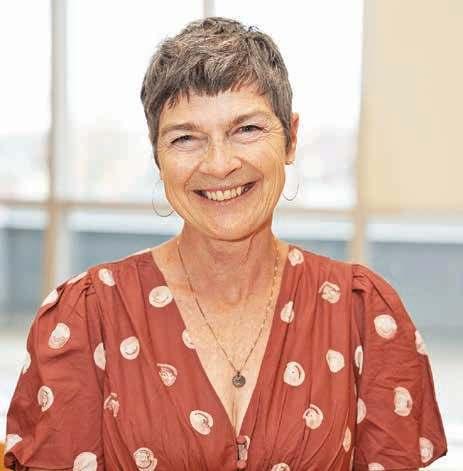
solution.
She advocates for more solutionoriented journalism, noting that an analysis of 336,000 articles on climate change in 2022 found that fewer than 0.2 percent even mentioned a solution.
By combining a light prose touch with a smattering of poetry, some practical exercises and a bushelful of expert commentary, the author offers a guidebook to staying informed while also not becoming mired in feelings of hopelessness in the face of serious, life-threatening challenges.
“Choosing to hope is not naïve,” she insists. “It is a pragmatic response.”
To give a flavour, the book opens with 27 “Constellation of Practices,” the last of which is “create a safe space for sharing eco-emotions.”
She offers five stances that form the chapters of the book, which she sees as the daily support needed to cope with feelings of doom. She urges readers to bravely whisper these to themselves every time they feel overwhelmed. They include:
I choose hope.
I reject fatalism.
I am emotional.
I am on a reparative quest of transformation.
I am nature.
Not surprisingly, words such as “self-care,” “resilience” and “mindfulness” appear frequently in the text, though none so often as empowerment,


which seems as common as periods.
Among those quoted in the text are the expected single-name spiritual and moral guides: Gandhi, Mandela, King, Tutu and, uh, Bono. Lesser-known experts also offer insight into coping.
How to Be Hopeful is filled with nostrums and aphorisms, as well as uncountable pithy sentences. Many readers will use coloured highlighter to stress memorable phrases, while other copies will be filled to bursting with sticky notes. Just a sample from the opening chapter: “Hope is hard work.” “Cynics are not the masterminds they’re perceived to be.” “Choose healthy skepticism over blanket cynicism.” “Healing isn’t linear. It’s multidimensional.” “It’s easy to fall into the trap of thinking that problems are reality and solutions are pipe dreams.”
While her book won’t be every reader’s preferred cup of (organically grown, responsibly sourced, fair-trade herbal) tea, many will find reassurance and a path forward in her earnestly hopeful message. Finally, stop your doomscrolling, which only serves to heighten anxiety without offering information on which you can act. With hope.
9781778402623
Tom Hawthorn’s latest book, Play Ball!, an anecdotal history of professional baseball in Vancouver, was published earlier this year.
Thesepoemsaredetailed survivalinstructionsfor thosewhogrieve,those walkingtheearth"no longerwhole"whenthe universehas"cracked apart."


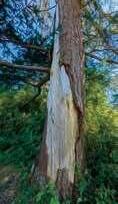















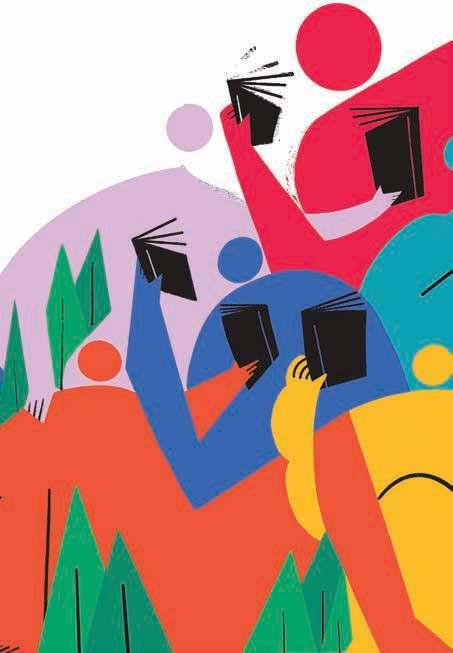

Kit Pearson (born April 30, 1947) is one of BC’s, and Canada’s, preeminent authors of children’s and young adult literature with more than 15 published titles. Critics have praised her meticulous research, her narrative skill, her imaginative choice of subjects from all across Canada and her clearly crafted prose. She has won many awards including the Governor General’s Award for English-language children’s literature
in 1997, the 11th annual Lieutenant Governor’s Award for Literary Excellence in 2014 and was appointed to the Order of Canada in 2019. Pearson is also a generous member of the children’s writing community being one of the co-founders of the Children’s Writers and Illustrators of BC, which provides writers and illustrators with a way to connect, support each other and promote children’s books.
Since 1995, BC BookWorld and the Vancouver Public Library have co-sponsored the Woodcock Award and the Writers Walk at 350 W. Georgia St. in Vancouver. This $5,000 award is also sponsored by Dr. Yosef Wosk, The Writers’ Trust of Canada, and Pacific BookWorld News Society.



BY GRAHAM CHANDLER
If you’ve ever wondered what a particular job would be like, what’s the best way to find out? Most people would say, why just get down, get your hands dirty and do it, do it. There’s always so much more to be learned “on the job” than just watching or reading about it can reveal. Unless you’re reading someone who got down and did it—for well over a decade, then wrote about what it was like. But there’s a catch with that approach—the inherent problem of becoming a boring read. Which won’t happen if it’s experienced and written by an author with the talents and reputation of Alan Haig-Brown. Then you won’t be able to put it down.
In Raincoast Chronicles 25: mamaɫa Goes Fishing, Haig-Brown writes that in 1960 he was living in Campbell River, an 18-year-old newlywed high school dropout facing meagre employment prospects. But he was more fortunate than many in such circumstances: his wife’s father, Herb Assu, was a talented and successful fisher whose family owned a seine boat. You can probably guess how this story begins now, especially when you read what Haig-Brown says of his immense respect for Herb. “He was…the man who informed so much of my formative years between 1960 and 1973,” he writes. “Herb was both my skipper and my father-in-law. The two roles were inseparable, and the latter explained the former. Just as I became a part of the family, I became part of the crew on the family boat.”
And thus begins this brilliant memoir, with a twist: The family to which Haig-Brown refers is part of the We Wai Kai Nation on Quadra Island. And Haig-Brown, with an American mother and British father (the awardwinning writer of 28 books, Roderick Haig-Brown) was “mamaɫa”—or “white guy”. Cultural understandings, and occasional misunderstandings, provide ample fodder for some entertaining reading.
The volume boasts a plethora of great black and white photographs from the early 1960s and 70s, a large number of which were shot by HaigBrown’s then-wife, Vicki. These add tremendous value to the book as a source of history of the early Canadian west coast commercial fisheries, as Haig-Brown’s vividly detailed descriptions of activity and processes contain references to the terminology shown in those well-produced original shots chosen for the book. Just look on pages adjacent to the text and you quickly understand a sequence.
Along the way, Haig-Brown’s writing reflects an early infectious enthusiasm for the life of a west coast fisher—bolstered by an oft-typical sense of adven-
tAlan Haig-Brown and his father Roderick Haig-Brown, who was his first teacher about hunting and fishing. Later, as a young man, Alan Haig-Brown found a new “professor of the waters and of life” in his fatherin-law, Herb Assu.

Alan Haig-Brown’s memoir of life as a west coast fisher is bolstered by an oft-typical sense of adventure felt by an excited teenager on their first full-time job.
ture felt by an excited teenager on their first full-time job. He learned fast and soon adapted to the unique rhythm and challenges of the fishers’ life. “When you spend months on a small boat with a half-dozen or so other people, you get along or get off. Everyone has their job, and they do it or leave.” But, he writes, not all was work. “In the 1960s, fishing was in some ways a gentler profession.” For example, he talks of taking time to anchor offshore and climb a hill to pick huckleberries, and “Mitzi [Alan’s mother-in-law] would make huckleberry pies” to go along with her delicious salmon stews.
The level of detail he employs when describing a particular process like seining is nothing short of amazing— considering that he’s talking about something he was learning upwards of 60 years ago. Clearly his enthusiasm hasn’t faded; it’s still contagious. Along the way we learn some of the terminology of the industry and new words like “fish peugh,” “brailing,” “hand bombing,” “zine,” “monkey fist” and “bunt.”
Taking in the BC coast from up north for pink salmon to the south for herring and everything in between, Haig-Brown recounts more than the physical lifestyle. On a week-long
December trip to the Port Edward cannery near Prince Rupert, “I learned something about navigating a boat in the dark and snow without radar, but I also learned of the racism that the BC fishery was built on and the deepseated anger that my fellow crew carried as a result.” He is referring to his admiration of the good-looking salmon seiners built by the Haida people. And he soon learned that, due to debt incurred in their building, these boats were taken away from their owners by the company. Sixty years later this is still a cause of pain and anger for the Haida people, he says.
Haig-Brown writes glowingly of his father-in-law, Herb—who is featured throughout the book. “He was my professor of the waters and of life,” he writes. “For some of my commercial fishing years, I also attended university. The learning on the boat was a slow, immersive process, while university was an intense rush of lectures and undigested information. Like a slow-cooked roast, the boat learning was rich in flavour and nutrition. The university, with its diverse lectures and specialized faculties, was more like a cafeteria meal served on a segmented plastic plate.”
9781998526185
Vancouver-based writer Graham Chandler has several hundred published stories to his credit and prefers those—like this review—in which much is learned along the way.
Street photographer Rodney DeCroo has taken up a challenge that has captivated other Vancouver artists for decades.
ast Vancouver, even with its sprinkling of middle-class bohemians and professionals, puts the lie to Vancouver’s Lotusland nickname as Rodney DeCroo shows in his debut book of street photography, Night Moves.
EBY BEVERLY CRAMP
“decroo’s photos have spotlit a vancouver that’s about something more than unlimited growth and runaway commerce,” writes Georgia Straight senior editor Mike Usinger in the book’s foreword, adding “a place where not everyone dreams of owning a Tesla or a three-bedroom condo, mostly because in all likelihood that’s not going to happen,”
Known for his poetry, singing and songwriting, and playwriting, DeCroo has been shooting street life, what he refers to as “street music,” for the past half decade. His pictures, like most artistic endeavours that DeCroo pursues, are “defiantly DIY,” says Usinger. “Untrained, he simply picked up a cheap digital camera and started shooting. And while he’ll argue today that it took him a while to figure things out, even his earliest works make a case that he hit the ground running.”
DeCroo’s street shots were quickly noticed by other publishers. Years before the release of this slender volume, his photos appeared in the glossy Montecristo magazine as well as subTerrain and The BC Review, proof that his new work earned early recognition.
DeCroo sporadically includes poetry in Night Moves like “New Camera” in which he tells of buying a camera despite his fears of disappointing results. “Failure would be the rule, / the beautiful exceptions few,” he writes. He fretted about being able to capture the magic of the street and that people would get angry at him for taking their picture without permission. Yet on the way home with his new gadget, DeCroo says that he pointed “the camera at the windshield /
as the sun appeared between the clouds / and for a moment everything was light.”
And so DeCroo joins the ranks of other street photographers in Vancouver like Fred Herzog (1930–2019), who worked mostly with colour slide film, raising his images to high art with his understanding of the technical medium and, as Herzog said, “how you see and how you think.” Like DeCroo, Herzog also chose the grittier streets of Vancouver although he started in the 1950s and carried on until the 2010s. Herzog’s colour slides were later developed into large format prints, framed and sold at commercial galleries for high prices.
DeCroo’s path to startling pictures didn’t come easy, says Usinger. “The reality … is that street photography is also about endless intangibles: timing, intuition, reflexes, curiosity, empathy, and ultimately an understanding that every one of us on this planet has a story to tell, even if we don’t always recognize that,” he writes. “Part of the power of [DeCroo’s] work is a recognition that not all of those stories are happy ones.”
That may have been an understatement. DeCroo shows us tired grimaces; angry explosive looks and hands raised as if about to reach out to throttle someone or something; annoyed faces turning away; lonely nighttime scenes at bus shelters; a guardian shielding a small girl from Downtown Eastside denizens at the side of a busy street. We see a man carrying his belongings in a single plastic bag thrown over a shoulder; another man asleep in the back of a van that looks for all the world like a temporary home; young couples clutching hands.
DeCroo is drawn to the poor and working class, perhaps reflecting his own upbringing in a coal mining town just outside Pittsburgh, Pennsylvania where he was exposed to fighting, underage drinking, abuse and neglect. He later moved to BC and eventually settled in East Van-
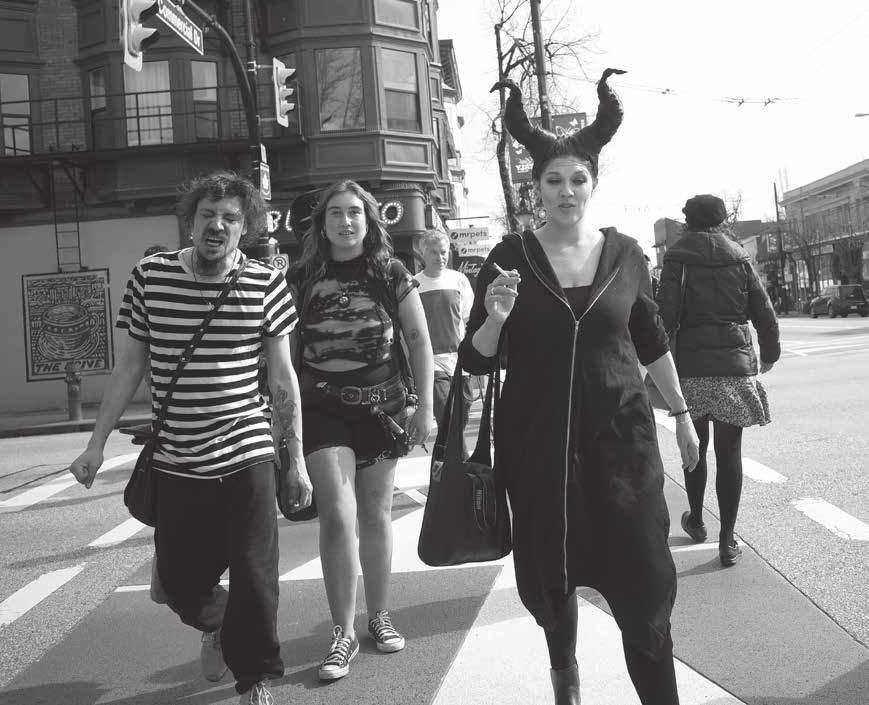
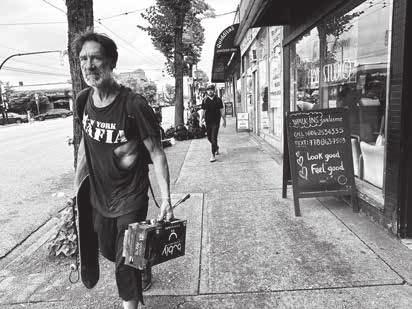
couver where he has lived for over three decades.
But DeCroo also celebrates eccentrics: a woman with a wide-mouthed smile as she peers out of heart-shaped sunglasses; people on the street proudly sporting wild hairstyles and leather jackets with inch-long spikes (showing their right to “fly one’s freak flag,” says Usinger); a small boy greedily licking an ice cream cone; a coffee drinker staring dreamily out of the Continental Café; a woman carrying her cat on her shoulder as it digs its claws into her for balance.
There are several night scenes in this book as the title, Night Moves, suggests. DeCroo suffers from insomnia and finds solace on the darkened streets, which has led him to produce sublime images of East Vancouver like his nighttime shot of the Fox Cabaret sign on Main Street, garlanded with tree leaves glistening under a street lamp.
DeCroo has discovered that taking photos of people on the street is not a proverbial walk in the park. In one instance, after someone called DeCroo “a creep” for taking photos of strangers—telling him it’s “offensive” and possibly “perverted”—he took it to heart. DeCroo’s response
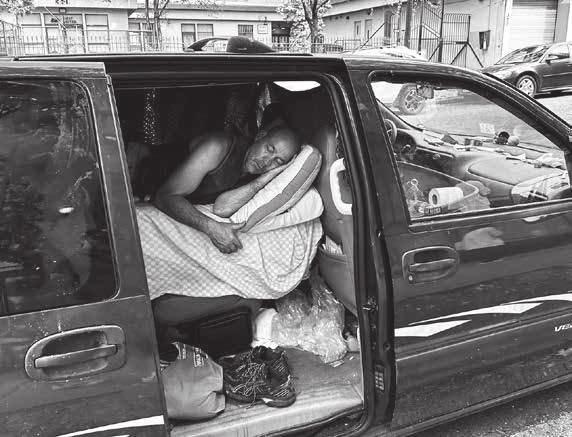



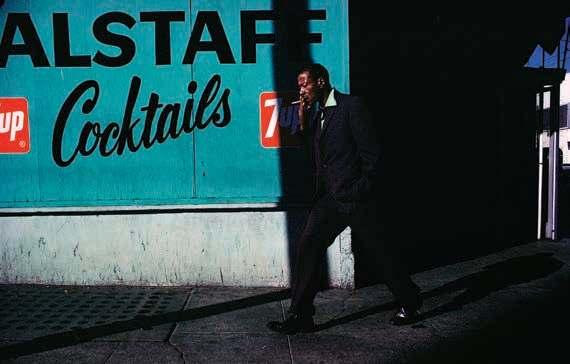
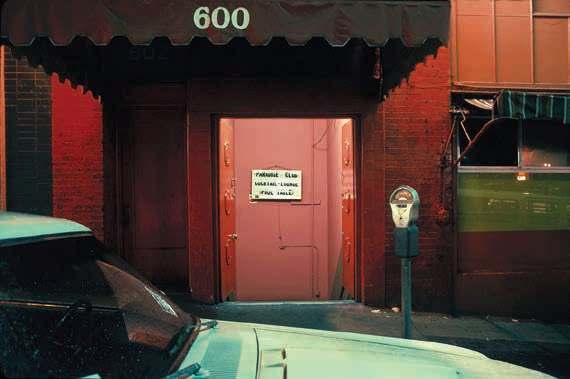
came in the form of a poem, “An Older Dishevelled Man” and reveals part of his rationale for continuing: “… maybe she’s right, but I can’t / shake the idea that I might find the face / that explains why we’re so alone.”
Onight photography requires a special touch how does one capture the sunless, dark spaces and artificially lit areas to produce something that is relatable to the human eye? Burnabyraised Greg Girard’s philosophy is to utilize only the light that is available, which usually comes from street lamps, backlit signs, neon signs and light streaming out of buildings. It makes for surprisingly-coloured images as demonstrated in one of his most recent books, American Stopover (Kominek $100).
Girard left Vancouver at age 18 to pursue photography in Asia’s largest cities—Hong Kong, Shanghai, Tokyo, Okinawa and Hanoi (among others) for over three decades. He sold his pictures to Time, Newsweek, Fortune, Forbes, Elle, Paris Match, Stern and the New York Times Magazine, and became a contributing photographer to National Geographic. He also published photography books including one of his most famous titles, City of Darkness: Life in Kowloon Walled City (Watermark, 1993), co-authored with architect Ian Lambot; later revised and republished as City of Darkness Revisited (Watermark, 2014). The two books record the notorious Kowloon Walled City that, before being torn down, was considered the most densely populated place in the world with over 35,000 people squeezed into 350 buildings, 12–14 floors high, on a single Hong Kong city block. The buildings were built without any regulations or professional considerations. But it worked, especially for poor immigrants to the city who couldn’t afford to live anywhere else.
Girard moved back to Vancouver in 2011 and continues to publish books. American Stopover is
about his time as a young aspiring photographer making his way to Asia via San Francisco and Los Angeles. His first trip was by Philippine freighter, taking 18 days to cross the Pacific in the last of the pre-containerized, general cargo ships. For his later travel, Girard took discounted airline journeys. “These were all-cash trips (it would be years before I got my first credit card),” he says. Girard’s budget-poor journeys included staying in cheap motel rooms or even staying up all night in 24-hour coffee shops or cinemas. “Downtown Los Angeles, at that time, had a number of allnight cinemas showing triple bills for $1.75,” recalls Girard. “Most of the patrons, like myself, were half watching, half sleeping.”
These early trips provided the young Girard with fresh new photographic inspiration. “After arriving at the airport or Greyhound terminal I would find my way to a hotel or motel room downtown and start photographing.” American Stopover captures those days showing the germination of Girard’s early nighttime aesthetic.
Although Girard initially gained fame for his cinematic pictures of the physical and social transformations taking place in China and Asia, his images of what his gallerist, Monty Clark, calls “nostalgic neon-lit nocturnal scenes from 1970s and early 80s Vancouver” have recently earned new audiences through a collaboration with German fashion designer, Jil Sander. Whole segments of photos from Girard’s Under Vancouver series, to patterns and colours inspired by the images in Girard’s pictures, found their way onto clothing ensembles at Sander’s 2025 Spring/Summer collection, including a vintage car, a room at the Lotus Hotel, a jewelry store window and the Silver Grill Café.
Girard is currently working on a series of photographs of working-class Japanese karaoke bars that will also appear in a new book.
Night Moves: 9781772142396
American Stopover: 9783982454269
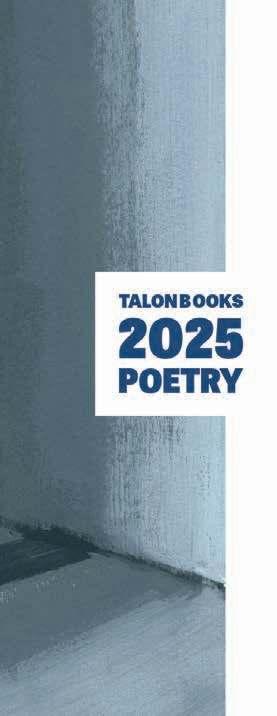
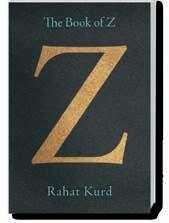
Rahat Kurd
The Book of Z gives voice to Zulaykha, the Qur’an’s “wife of Aziz” and the Biblical “wife of Potiphar,” whose legendary passion for Yusuf (a.k.a. Joseph) has been both celebrated and reviled over centuries.
Forthcoming October 2, 2025
ryan fitzpatrick
This poetry “LP” features ten “tracks” that ride country music’s resurgence to probe our anxious era, weighing nostalgia against paradise bets and the toxic comforts we refuse to drop.
Forthcoming September 12, 2025
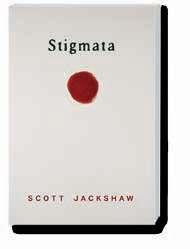

Scott Jackshaw
Stigmata writes a counterhistory of the wound, weaponizing the confessional in a treacherous adventure through the crosscurrents of sexual deviancy and religion.
Forthcoming September 1, 2025
Drew McEwan
Drew McEwan guides the reader through an interrogation of the ways we tour the spaces of language, always stepping between the sayable and the unsaid.
Forthcoming October 14, 2025
New books from BC and around the world
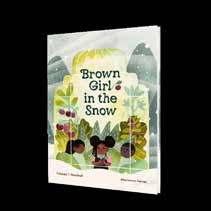
Yolanda T. Marshall & Marianne Ferrer
A stunning picture book about persistence, being creative in the garden, and adapting to a new place.
978-1-77164-926-1
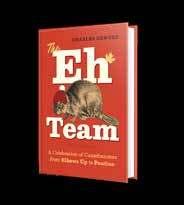
Charles Demers
A laugh-out-loud funny guide to how to talk, live, and feel like a Canadian.
978-1-77840-374-3
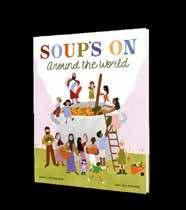
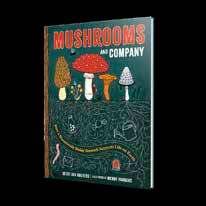
Denyse Waissbluth & Chelsea O’Byrne
This poetic picture book takes readers across the globe exploring different soups and soup traditions!
978-1-77840-167-1
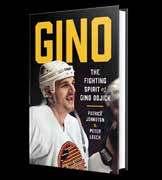
Patrick Johnston & Peter Leech
The fully authorized biography of Vancouver Canucks player Gino Odjick.
978-1-77840-270-8
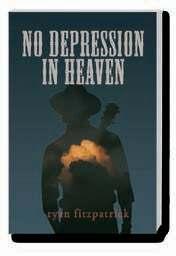
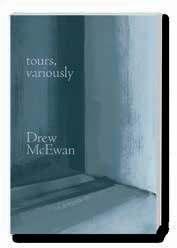
Find in the BC Ferries Gift Shop or Your Local Bookstore or at greystonebooks.com
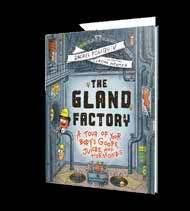
Geert-Jan Roebers & Wendy Panders
An information-packed introduction to the fascinating world of mushrooms, molds, and more!
978-1-77840-222-7
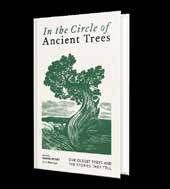
Valerie Trouet
This captivating book about the study of tree rings uncovers the stories of 10 species of ancient trees.
978-1-77840-268-5
Rachel Poliquin & Clayton Hanmer
A wonderfully fun—sometimes gross—exploration of the endocrine and exocrine systems.
978-1-77840-098-8
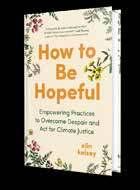
elin kelsey
A grounded and empowering howto guide to being hopeful in an era of climate anxiety.
978-1-77840-262-3
of a
by Brian Thomas Isaac (Random House $35)
BY TREVOR CAROLAN
British Columbia’s Interior’s high plateau along Highway 97 from Vernon to Kamloops is unexpectedly beautiful. Its rolling hills, lakes, dry grasslands and vast blue skies are traditional cowboy country, although you can’t miss the summer and retirement homes springing up along the shorefronts. Drive half an hour out of Vernon into the Salmon River Valley and you reach Falkland, an old-time community of less than a thousand—but that swells with its rodeo in May. Those small-town buckaroos that Ian Tyson sang about are still here.
In the late 1960s, life in Falkland was simpler. On the Okanagan First Nation Reserve nearby, where Bones of a Giant plays out, it was simpler yet. In jerry-built homes without piped-in water or electricity and with residential schools still the norm for children most of the year, conditions off the grid on the Rez were as basic as it got in Canada. Mainstream sources pretty much ignored Indigenous communities back then. However, the writers Jeanette Armstrong, Ruby Slipperjack, George Clutesi and Richard Wagamese, among others, would provide readers with incisive writing on the subject, to which Brian Thomas Isaac from the Okanagan Reserve added barometric depth in 2021 with his acclaimed first novel, All the Quiet Places (TouchWood). Its story of young Eddie Toma and daily life on the Rez there circa summer 1968 depicted a culture in both remedial and long-term crisis that drew sparkling critical attention. Without reproach or invective, Isaac’s book demonstrated why a Reconciliation Movement was overdue.
It’s not necessary to read Isaac’s earlier book to appreciate Bones of a Giant, but after reading it you’ll want to. Isaac delivers with a calm, laid-back voice, one we can trust. It’s a voice that emerges from the land, the territory you encounter upcountry in this province. Honest in the bone, it unfolds with the mastery of a wise, seasoned storyteller that your gut tells you has seen some bad stuff—an elder who knows that without deep, structural change, there’ll be more.
Lewis Toma, like his disappeared brother Eddie before him, has a hard time negotiating friendships at high school. Embarrassed by the slapdash appearance of the “Indian” house he lives in with his mother, and by his uncle’s broken down cars around the property, he’s a loner— the sole Indigenous kid in Falkland’s public school. His mother, Grace, has been able to convince the white Indian Agent that governs their

Brian Thomas Isaac’s sophomore novel follows the Toma family’s hardscrabble
material life to keep him away from the residential school as a chance to try and learn alongside white classmates, the summas, for his future. He’s a walking target for abuse and bullying there, a symbol of the whole larger culture’s systemic racism against Aboriginals.
Early on, bushwalking behind his bachelor Uncle Alphonse’s house, Lewis sees strangers shoot the lock off a keep-out fence, then trespass onto Reserve land. He partly overhears a plan, but doesn’t understand its aims.
Nervous, he retreats to a hollow tree hiding place that his brother knew.
Nearby, a giant cottonwood has toppled and crashed; the ragged branches look like the bones of a giant, he
t
Brian Thomas Isaac
thinks. It’s his safe place, the only one besides his uncle’s home where he learns from Alphonse and from his mother’s friend, Isabel, the story of his own young life and that of his missing brother. Eddie, we learn, vanished following a terrible accident that took the life of his girlfriend, Eva, daughter of a white family from near the Rez. Two years later, everyone has an opinion about it. “I bet he saw her everywhere he looked and couldn’t stand it no more,” his old boss, Hank, says. Odds are that he headed for the river, and
Brian Thomas Isaac in Valleyview Alberta while working in the oil fields in 1968.
is probably dead.
Grace, still grieving, is a tough bushmom, abandoned by her shiftless husband, Jimmy, a drinker and womanizer. He’s the novel’s bad luck sign that Grace can’t shake, even though a beating from him in pregnancy caused the stillborn death of her baby girl. Grace smokes roll-your-owns and harangues the Indian Agent to get plumbing and power funded for her house. With its veto power over fundamental life conditions, the corrosive control of the Indian Act is plainly evident. One alternative is for Reserve natives to earn independent summer cash packing fruit across the border in Washington. When Grace and Isabel leave to work, Lewis is left with relatives.
Life moves slowly on the Rez. Isaac spins a Book of Days recounting incidents familiar to any teenager, punctuated with period radio hits and a believable cast of Lewis’ friends and checkered characters. Uncle Alphonse delivers raw one-liners that would make a logger blush and there’s the necessary summer teen romance and an unlikely intervention—all in prelude to a return of the devil himself. Jimmy’s back with a fast car sporting a hot flames paint-job and a plan. Trouble is knocking.
When the patriarchal language of the Indian Act ensures Grace’s family land tenure is vulnerable, existential conflict grows. At stake is a shaken world that needs rectifying. No spoiler alerts here: Isaac can put the ball over the plate and can handle the curve. If the narrative dynamics that made his first novel resound are not as pronounced, the resolution here makes sense in curious Rez fashion—as if the third in a uniquely BC trilogy was already underway. 9781039011779
Trevor Carolan writes from North Vancouver.

“...unfolds with the mastery of a wise, seasoned storyteller that your gut tells you has seen some bad stuff —an elder whoknowsthatwithout deep, structural change,there’ll be more.”
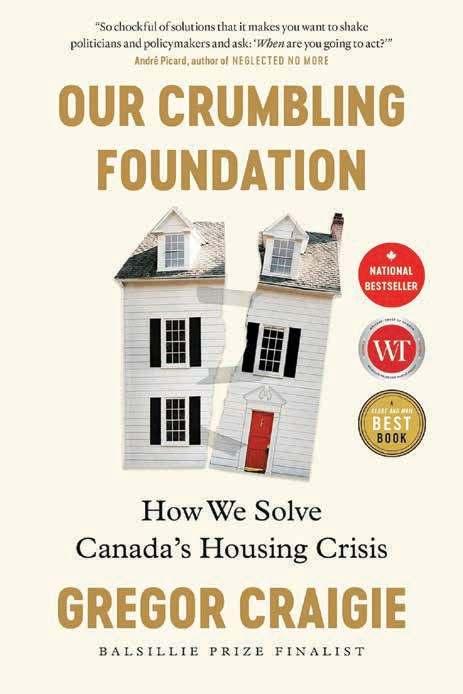
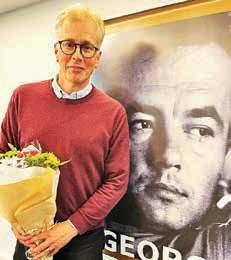

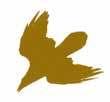
by Gregor Craigie
After amassing a remarkable body of research through years of gathering data and information, and conducting interviews with people across Canada and other countries about the crisis in housing, Gregor Craigie has written an engaging book about an issue that continues to create problems in Canada. Craigie gets to the heart of daily life struggles for affordable shelter with his compelling stories that depict the hardships of many. He also delivers concrete evidencebased solutions from cities and jurisdictions around the world.
“This is a necessary book for our times,” said the Ryga Award judges. “Every elected government official and member of municipal and regional planning departments in the nation should be presented with a copy. There’d be no more excuse for trifling on the issue while another generation is dispossessed of the chance to have a decent piece of roof over its collective head.”
The Tenants (Anvil Press) by Pat Dobie
Climate Hope: Stories of Action in an Age of Global Crisis (D&M) by David Geselbracht
The Knot of My Tongue: Poems and Prose (M&S) by Zehra Naqvi
Canada and Colonialism: An Unfinished History (UBC Press) by Jim Reynolds
Keefer Street (Ronsdale Press) by David Spaner
Judges for the George Ryga Award were author and poet Trevor Carolan, retired librarian Jane Curry and BC BookWorld publisher Beverly Cramp.
With the sponsorship of Yosef Wosk, VPL and Pacific BookWorld News Society, the annual George Ryga Award is given to a BC writer who has achieved an outstanding degree of social awareness in a new book published in the preceding calendar year.
Rufous
and Calliope
by Sarah Louise Butler
(D&M $24.95)
BY SUSAN SANFORD BLADES
All family histories are made up, to a certain extent. Siblings will remember the same pivotal event in different ways—was it you or your older brother who tied Dad’s shoelaces together under the table at your grandparents’ anniversary party? And memory, we are told, is unreliable. Every time we return to one, it becomes increasingly warped, like an overplayed cassette tape. Sarah Louise Butler explores exactly this territory in her sophomore novel, Rufous and Calliope
The novel flips between three time periods—the summer when Rufous was five years old which he spent on the lam living in a treehouse with his twin sister, Calliope, and his older siblings: Silv, Fletch and Fawn; his post-treehouse childhood which was spent apart from his siblings in the fictional small town of Fleetwood Siding; and the present tense in which Rufous is traversing the Caribou Pass Trail on foot in order to arrive on time at the treehouse for a planned reunion with his siblings, whom he hasn’t seen since that fateful treehouse summer.
In a series of short chunks, the book is written in a style that mimics Rufous’ patchy and faltering memory. We receive little bits of information from various times in his past and present, stitched into a version of his story, offering more or different details on each pass. We learn that Rufous and his siblings ran from something at home and ended up spending that summer in a treehouse in the Kootenays hiding from social workers, or any adults, whom they were certain would split them up. They survived off of thimbleberries, huckleberries, Saskatoon berries and fish from the river. They planned to leave in the fall, once the campground nearby thinned out and they became more conspicuous. Almost starving despite their best efforts, they decided to stay until after “the caloric windfall of Halloween.” We know something terrible happened after Halloween and that Rufous spent the rest of his childhood away from his siblings in a stone house in Fleetwood Siding being raised by a kind middleaged couple, Aoife and Seannagh. We know his memory is becoming increasingly unreliable.
Butler uses Rufous’ condition, “a progressive neurodegenerative illness, one that will ultimately prove fatal,” to ruminate on memory and story, as well as to build tension. Through Rufous’ sparse recollections, she feeds us little pieces of what happened in the treehouse, how the siblings were separated, how Rufous ended up in the stone house, bit by bit. Family
A wildlife lover—in the midst of losing his memory—returns to the forests of the Kootenays during wildfire season to reconnect with siblings and the natural world of his past.
tall tales also play a role. We hear the older siblings’ yarns about how Rufous and Calliope ended up in their family, of how Rufous lost a pinky finger— “Calliope had bitten off the little finger on my right hand before we were even born, and she’d been a biter ever since.”
We realize the importance of memory in building our own stories, our sense of self: “if I don’t remember, does it even count?” But we also become aware of the fallibility of memory—anyone’s memory. Rufous tells us, “I was five years old—all of this is a translation. I can’t go back there to feel everything
“I was five years old—all of this is a translation. I can’t go back there to feel everything exactly as it was. I can only filter it through the person I am now.”
—Excerpt from Rufous and Calliope by Sarah Louise
Butler
exactly as it was. I can only filter it through the person I am now.”
Interestingly, Rufous, who as an adult is both a wildlife technician and cartographer, seems to remember everything having to do with the flora and fauna of the Kootenays. His story is very much grounded in the natural world. It’s how Rufous understands time passing; for instance, he’d know winter was coming “when finally all the branches of all the apple trees in the orchard were empty, the last of the wormy grounders fermenting in crowtorn heaps on the ground.” And Butler
uses Rufous’ memory loss to contemplate how it mirrors the way most humans forget their place in nature. As he treks, as an adult, back to the treehouse, he is surrounded by smoke from forest fires, ashes falling from the sky. “Maybe this is what we have,” he thinks, “an acquired neurological condition in which we have lost our ability to recognize who we are related to. We look into the eyes of the owl, the bear, the bat, and we deny. We deny. And again, a third time. / I do not know you And the world burns.”
In Rufous and Calliope, Sarah Louise Butler has thoughtfully composed a love letter to the flora and fauna of the Kootenays, and to the bonds of family, both genetic and found. It covers some tragic territory but leaves us filled with hope, both for humanity and for the earth that holds us.
9781771624572
Victoria-based Susan Sanford Blades published her debut novel, Fake It So Real (Nightwood), in 2020.
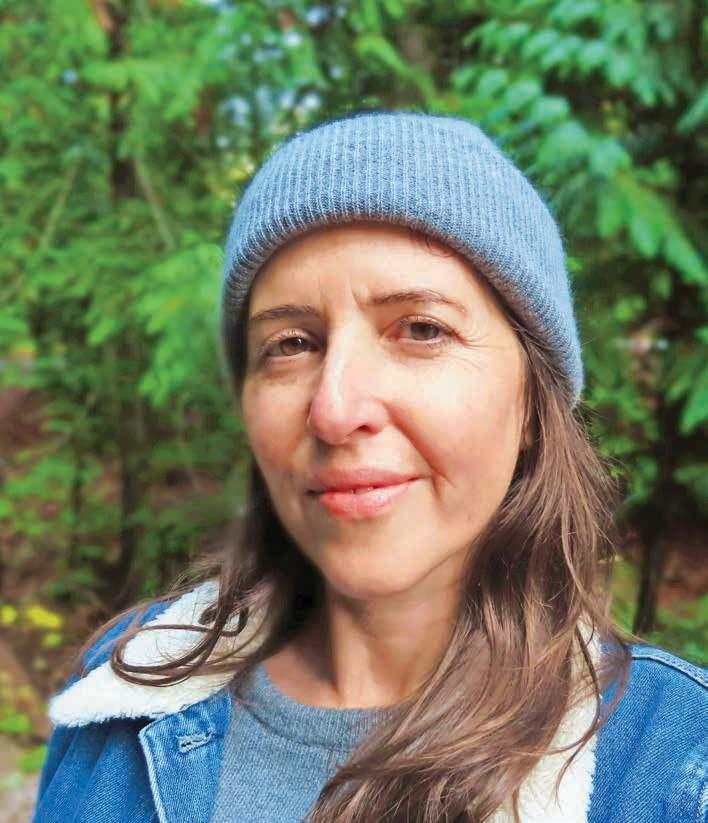

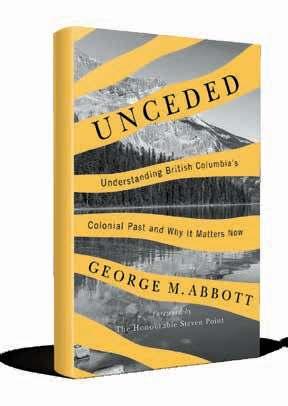

Understanding British Columbia’s Past and Why it Matters Now George Abbott; Foreword by the Honorable Steven Point Treaty commissioner George M. Abbott combines archival research with a former cabinet minister’s insider perspective to chronicle over 150 years of BC government–Indigenous relations, providing context for understanding today’s reconciliation efforts.
Archaeology in British Columbia and the Stories It Tells Robert J. Muckle; Foreword by Karen Rose Thomas Robert Muckle takes readers on a journey to the province’s most notable archaeological investigations, from footprints on Calvert Island left 13,000 years ago, to the body of a man frozen in ice for centuries in the Tatshenshini region, to a First World War internment camp near Fernie.
available at your local bookseller or online at ubcpress.ca
T r a d e w i n d B o o k s
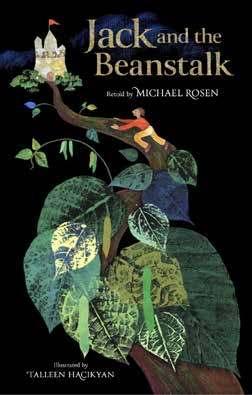
Jack and the Beanstalk by Michael Rosen illustrated by Talleen Hacikyan
“Rosen’s unsentimental but always theatrical voice, and Hacikyan’s stained-glass-like visuals replant a familiar folktale in rich imaginative ground, showing how old stories can continue to yield new growth.”
–Publishers Weekly
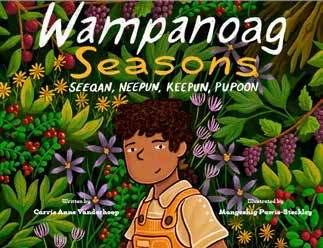
Wampanoag Seasons:
Seeqan, Neepun, Keepun, Pupoon by Carrie Anne Vanderhoop illustrated by Mangeshig Pawis-Steckley
“With lovely, striking images and a warm, exultant child’s voice that exclaims about nature, family, and family-in-nature, Carrie Anne Vanderhoop and Mangeshig PawisSteckley take readers to another imaginative world whose citizens appreciate their place in the family of things.”
–The British Columbia Review
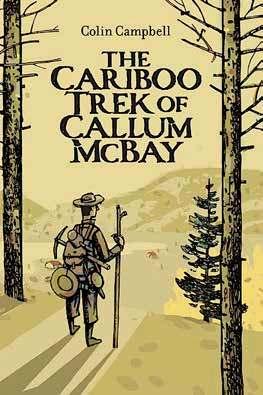
The Cariboo Trek of Callum McBay by Colin Campbell
“Sensitivity to place and to the original peoples of the Fraser Canyon add to this tale of youthful adventure . . . I expect today’s young readers will enjoy joining Callum’s trek just as I did.”
—The British Columbia Review
www.tradewindbooks.com
BY CARELLIN BROOKS
Reader, take heed. Most Grievous Fault is a terrible book—but I mean that in the best way, in the sense that the situations described are distressingly bad.
The title references a prayer to which the protagonist’s daughter, then the main character herself, turns. But it also addresses the question of why. Why are we the way we are? Why do we sometimes make such terrible choices? Is it our fault? And even if it is, can anyone else be blamed?
The heroine of this novel, Crystal Constantine, has more than one fault. She drinks copiously, hits and then soothes her teenage daughter and lashes out at the police who come to check on them. Still, she hasn’t hit bottom—not quite yet. When we first encounter Crystal, she’s working as a maid in a suburban motel—perhaps the best thing about her life. Work offers stability, an affirmation of her worth and the love of a fellow worker, Sara, who lives in hope that their friendship will turn romantic.
The other best, and also difficult, thing about Crystal’s life is her neurodivergent daughter, Becky. Becky is newly enrolled in a Catholic school that her mom’s longtime mentor hopes will bring some structure to the pair’s chaotic life. And, miraculously, the move seems to work. Becky catches religion and Crystal catches the eye of a man on the bus who’s looking for a wife. Everything seems to be going so well. Until it doesn’t, mostly because of Crystal’s childish inability to tell the truth. Crystal lies as kids do, instinctively, without thought for tomorrow or for the further complications that will ensue. She never lets her coworker Sara know that far from contemplating a future with her, she’s actually planning on marrying a man. She never lets her new fiancé know she’s actually a mom. She never lets her difficulty making rent stop her from signing up for payments on a new car, a wedding dress (before there’s even a wedding), a “free” computer with monthly Internet payments. She never tells her mentor, Jean, that the engine of the old car Jean lent her seized up when Crystal forgot, despite Jean’s reminders, to check the oil. Best not let Jean know that Crystal is now on the hook for thousands of dollars in repairs, either. Of course, the truth will out and when it does she goes on the offensive. “I don’t know. Whatever. It’s not like it’s my fault. What was I supposed to do? The guy at the garage even said that. Black smoke, it scared the shit out of Becks and me. FYI. I mean. You gave it to me.”
Crystal’s inability to tell or even face the truth is matched by her daughter’s stammering inability to shape a whole sentence. But Becky has talent, too. When she sings the solo in the Christ-

Meg Todd’s novel opens the door to questions of why are we the way we are. Why do we sometimes make such terrible choices? Is it our fault? And even if it is, can anyone else be blamed?
mas concert, her mother marvels. “Becksie! Her little voice which wasn’t little at all but was clear, and high. And perfect.”
When her lies begin to multiply and spiral out of control, however, Crystal sends Becky off to live with her own mother, Milly. Like so many of her solutions, this one is makeshift and morally questionable at best. Milly wasn’t the greatest of mothers, especially after Crystal’s father died and an abuser entered the picture. “A normal mother would have put her foot down, would make sure you don’t see him [the abuser] again. But she isn’t normal. She isn’t there. She isn’t in the room.”
Why is Crystal like she is? Here is where the real genius of this story reveals itself. We learn in the fits and starts of Crystal’s own spiralling thoughts how her mother checked out with drink the same way Crystal does now; how her dad died; how Crystal met “him”—the guy who would not only take her himself but lend her to other guys, leaving her pregnant with Becky as a teenager. To say that Crystal has not “dealt with” her experience
of sexual violence is an understatement. She hasn’t allowed herself to be touched since. Not by Sara, not by her fiancé Tim, certainly not by the phone sex work she does on the side in order to make the money for the extra bills she racks up.
Instead, Crystal drinks. “All she wanted, all she was looking for, was something good. Something in her life that made her happy. Then she thought about the bottle under her sink which would be there waiting for her. Winking. I am your friend. I’ll make you happy. You can count on me!”
There are brief glimmers of hope in these pages; too few to lighten this read but, nonetheless, enough to save it from being unremittingly bleak. Crystal keeps going back to work, no matter how devastated her life. She drinks catastrophically, but doesn’t use other drugs. She doesn’t drive the new car when she’s drunk. She eventually realizes, then attests to, her mentor’s real help when Crystal was pregnant and on the street. And in the crisis, Crystal’s motherhood crystallizes and she claims her daughter, even if pages
later, amidst her self-pity, frustration and poor impulse control, she’s once again pummelling the teen.
I wished I could picture Crystal in this novel. Not describing her appearance may have been a deliberate choice on the author, Meg Todd’s part (there’s no one look of poverty and alcoholic despair), but I wanted to see how others might be drawn to her despite her bleak circumstances. Instead, we get a few sparse details—the makeup she wears, how, when she tries on a wedding dress, her waist is small enough to span with her hands.
After hundreds of pages of Crystal’s equivocations, Crystal’s rationalizations, Crystal’s nightly blurring into sloppy oblivion, Most Grievous Fault ends abruptly. Crystal suddenly realizes the source of Becky’s brain damage: her. But Crystal’s not the first mom to harm her child. A social worker puts it precisely when she says to Crystal: “Your mom. She drank when she was pregnant, didn’t she?” People who are damaged can’t make good choices, or rarely. Crystal has passed on the damage she suffered in the womb to her own daughter. A fault in a crystal is a misarrangement in the otherwise perfect symmetry of its structure. Crystal may be imperfect, but she does offer the clarity of a prism, one through which to view our own fractured world.
9780889714984
Carellin Brooks is the author of five books including her most recent, a poetry collection titled Learned (Book*hug, 2022). She lives in Vancouver.
ollowing on from her breakout poetry collection about zombies, eat salt|gaze at the ocean (Talonbooks, 2020), which was shortlisted for the Dorothy Livesay Poetry Prize (BC and Yukon Book Prizes), Junie Désil’s allostatic load (Talonbooks $18.95) delves into the ongoing wear and tear of global racial tensions and systemic injustice. She advocates for healing despite an inhospitable world. A UBC graduate, Désil has worked in Vancouver’s Downtown Eastside and is currently employed at a financial organization as manager of diversity, equity, inclusion and reconciliation. She is also a mentor for The Writer’s Studio at SFU. BC BookWorld’s Beverly Cramp interviewed Désil.
OFBC BookWorld: Did you discover the term allostatic load first, or did you find the term after you had written your new poems?
Junie Désil: I encountered the term allostatic load after the poems had already begun to take shape. At the time, I was reading Christina Sharpe’s In the Wake (Duke Univ. Press, 2016) and coediting The Capilano Review’s “Weathering” issue with Phanuel Antwi. I was already engaging with Sharpe’s concept of “weather” and “total climate,” which she describes as the ongoing, atmospheric conditions shaped by Anti-Blackness. I was especially struck by her notion of “weathering” as both literal and metaphorical wear and tear. When I came across allostatic load, it felt both revelatory and deeply familiar—like a naming of something I had long sensed. It offered a scientific and sociological frame for what I had been experiencing and observing for years: the cumulative toll of constant adaptation. These concepts—weather, weathering and allostatic load—felt interconnected. Together, they gave me a language and an entry point to write about the compounding stress of living under systems that devalue Black life. They helped me articulate the chronic wear and tear, the slow violence and the pernicious toll these systems take on the body.
BCBW: Are these poems meant to be understood as coming from you personally, or is the narrator a literary composite?
JD: The narrator is deeply personal and also a composite. I originally intended the voice to be more diaristic, rooted entirely in my own experiences. And yet, as people read the collection, I noticed how often they recognized themselves in it. While I began in my own voice, I also considered making the narrator more of a composite—but I resisted creating too much distance, so there’s a balance of mostly me and incorporating others’ general/similar experiences. That said, it is important for readers to know this is me speaking, these are all true experiences. I could not have made them up. The narrator carries my voice, my questions, my
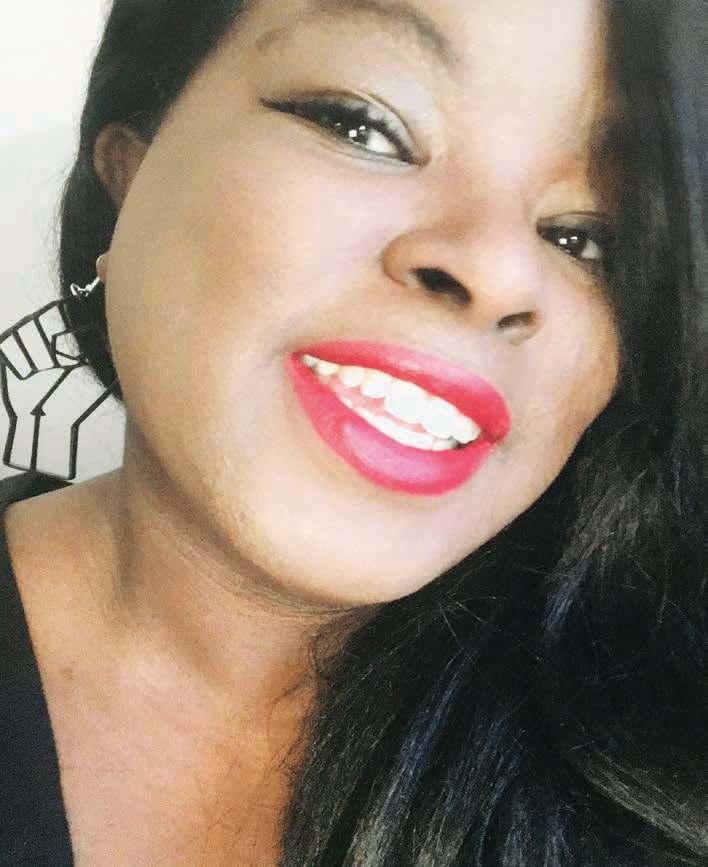
tJunie Désil explores the stress of living under systems that devalue Black life and the slow violence and pernicious toll it takes on the body.
memories; I wanted her to be specific and also porous.
BCBW: Does writing about racial microaggressions help you deal with them? Or is it a way of educating the broader world?
JD: Both, and more. Writing is a way for me to metabolize what might otherwise fester inside. It helps me name harm, resist erasure and sometimes even reclaim agency. My primary goal is not necessarily to educate—though if readers learn something, that’s incidental. When that happens, I try to offer enough context, but it’s ultimately up to the reader to explore further if they choose. I write to remind myself that I’m not alone. I write to connect with others who share similar experiences and to make visible what is so often dismissed or minimized. I write for those who genuinely want to expand their understanding of what it means to live in this world—for those who are willing to witness and hold the multiplicity and complexity of human experience beyond their own.
BCBW: What is your experience with “carewashing” and the impact of colonialism on healthcare?
JD: I coined the term “carewashing” to describe how systems claim to care, through messaging, language or surface-level gestures while continuing to cause harm. In healthcare, this is especially dangerous. I also try to highlight how systems of care are often underfunded, offloaded and structured to provide little more than bandage solutions. This is not about blaming individual healthcare practitioners. There are kind and committed people working within even the most harmful systems—but that’s not the point. The point is that these systems are extractive, colonial and often cause harm by design. Those working within them can become complicit—sometimes unwillingly, sometimes unknowingly and sometimes without concern. I want us to take off the rose-tinted glasses and recognize the need for truly caring solutions: ones that are holistic, community-rooted and not designed
to serve profit over people. My own experiences include being dismissed, misdiagnosed and disbelieved. But these poems aren’t an indictment of individual doctors. They’re a critique of a system built on colonialism, ableism and racial bias, among other forces. I’m interested in what it means to survive, and sometimes heal, within a system that wasn’t built for us. And perhaps, how we begin to dismantle those systems and imagine something better. BCBW: The protagonist gets some relief by communing with birds and the natural world. Do you find time to replenish in nature? What else works for you?
JD: Yes. I’ve had the opportunity to live in a remote, off-grid community where nature has become a refuge. I’m surrounded by trees, I watch eagles, ravens, vultures and hummingbirds overhead and up close. I see feral sheep and their lambs grazing, go barefoot, swim in the ocean and sit in silence—immersed in a living, vibrant landscape. These moments help me return to myself. I bake. I preserve food. I nap in the sun. Read, write. There’s something radical about moving slowly, paying attention to the natural world and disconnecting from constant noise and urgency. For me, it’s not just about healing—it’s about remembering pleasure and care in ways that exist outside of capitalism, as much as possible.
9781772016062



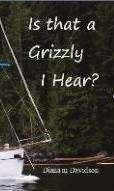



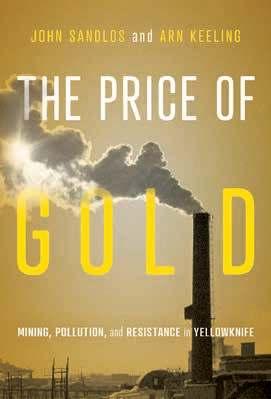

“The Price of Gold compels readers to confront the toxic legacies of extraction on Tatsǫ́t'ıné territory and the
Lianne C. Leddy, Wilfrid Laurier University
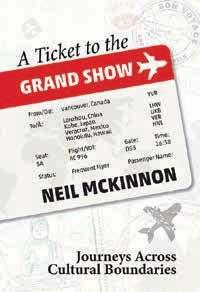
BY ANDREA ARNOLD
After a devastating blow to his family’s sheep farm in Scotland in 1862 and a looming bank loan repayment deadline, young Callum McBay decides to try his luck in the Cariboo goldfields in the Colony of British Columbia (when BC was not yet a province), inspired by tales of fortune shared by his girlfriend’s father. These were the days of “go west young man” for those looking for treasure, as Colin Campbell describes in his historical fiction title for young adults, The Cariboo Trek of Callum McBay. The tale chronicles what a journey to the gold rush might have looked like for a young Scotsman driven by desperation and hope.
Callum’s father agrees and soon after Callum embarks on a transcontinental journey in pursuit of financial stability for his family.
The story focuses heavily on the physical and emotional challenges rather than the search for gold itself. McBay’s first leg, a horse-driven stagecoach ride to Liverpool, is unpleasant due to rough roads and the perfume of his seatmate. “By the time we reached the Liverpool docks, my bum was bruised, my legs felt like I’d walked the whole way and my clothes reeked of lilac,” says McBay.
From Liverpool, McBay boards a steamer to New York, then a sailing ship to San Francisco, followed by another steamer to Victoria, British Columbia. Campbell vividly brings to life the harsh conditions at sea—crowded quarters, foul smells and seasickness among the passengers. A series of storms nearly capsizes the ship and McBay is struck by the terror of the moment: “We’re not going to make it, I thought. None of us will.”
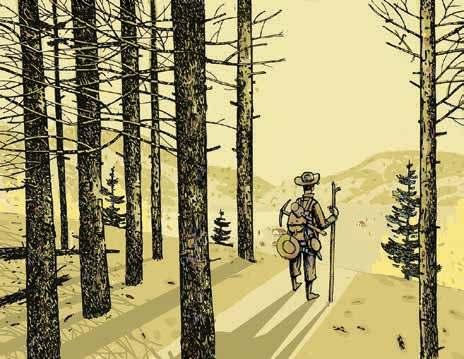
tgroup splits up and McBay continues alone on foot. After struggling with the weight of his supplies, he finds a surprising alternative to a mule—a camel named Nellie. Warned to avoid mules, since camels and mules clash, he sets off with Nellie and the two form an unlikely bond.
A
the wild
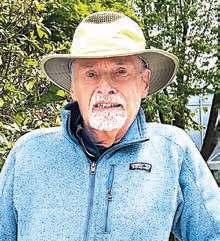
Following the storm, McBay’s cabinmate is taken to the infirmary as he has struggled to keep anything down since they set sail. The ship’s doctor says it might be consumption and that he may not be long for this world. Once the vessel clears the storms, repairs to the ship are made and the injured are cared for; the dead are given a somber burial service.
A series of graphic novels for children looks at the many wonders of small ecosystems.
Compared to an ocean or a sea ecosystem, a bay is tiny. However, the ecology of a bay is vibrant and filled with activity as author and illustrator Jana Curll shows in Barnacle Bay (Greystone $18.95), the first graphic novel for ages 6–9 in her “Little Habitats” series. Not only is each page full of illustrations and information, Curll uses humour—particularly puns—to make these lessons fun to read, i.e., “You can run but you can’t tide.”
There are creatures such as oysters, mussels and sea anemones in Curll’s imaginary Barnacle Bay. Chapter One, titled “What’s all the Comm-Ocean?,” introduces us to a crabby crab who’s fed up with the lack of attention he gets. Crab is set to leave the bay when he runs into Larva. “Are you lost?”
After the storms, a period of dead calm causes yet more havoc and delays the ship further. Ice melts, provisions spoil and rations are enforced until the next port. It’s a grueling trip.
Upon finally reaching Victoria, McBay gathers supplies and boards an overloaded steamer on the Fraser River to Yale, a jumping off point for gold seekers. “A sardine would have been challenged to find space, and it seemed that few of the passengers had recently made contact with soap and water...or a laundry,” says McBay. Onboard, he meets Frank and Danny, who plan to take the Harrison River route, which they deem to be safer than the treacherous Fraser River. The trio continues north by boat and on foot, mixing camping outdoors with paid lodgings when they could afford it. The trio often rely on the kindness of strangers and pay it forward when the opportunity presents itself.
In Lillooet, they rent mules to ease their journey, but Danny is thrown from his mule and injures his ankle. With medical attention required, the
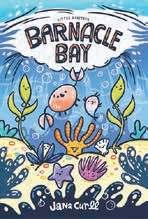
Eventually, McBay tries his hand at panning for gold along the Horsefly River but his success is cut short when his shack is robbed and Nellie disappears. Determined, he moves on to new creeks and abandoned claims, including Richfield near the famed Barker claim. He describes the boomtown that had sprung up: “A town, consisting of several close-packed log buildings raised on supports—with a wooden sidewalk running the length above its one very muddy street—had grown up around [the Barker claim].”
McBay works several sites, taking tips and borrowing tools from the experienced miners he meets. His modest success is not enough for more than survival, so he presses onward. One day, he stumbles upon a group of miners and is surprised to be reunited with a familiar face from earlier in his journey.
Without spoiling the ending (does McBay strike it rich or not?), Campbell concludes the story with McBay spending a couple of months working with this group as winter approaches. Eventually, he decides to return home to Scotland in time for Christmas, this time taking a train in hopes of a smoother trip than his outward voyage. The experiences McBay brings home leave him with a new outlook on riches. He reflects: “I had seen the decent and unselfish side of men, along with the greedy and cruel. I had experienced the incredible beauty of this far-flung colonial outpost and observed the complete disregard so many miners had for the land that made them wealthy. When it came down to it, the real gold was not those flakes and nuggets teased from cold northern creeks, but the friendships made along the way.” 9781990598333
Andrea Arnold, a writer for The Rocky Mountain Goat newspaper, lives in McBride, BC.
crab asks. “No … I’m Larva,” says the little larva (yuk yuk). Crab agrees to let Larva follow him on his way out of the bay and readers are introduced to kelp (not a plant but part of the Laminariales group), seagulls, snails, scallops, abalone, sea slugs, starfish, sea cucumbers and more. Not only does Curll describe the creatures, she also tells of the threats to them. In the case of kelp forests, we learn they are among the most important ecosystems because they harbour many diverse plants and animals. But pollution and climate change, as well as human commercial harvesting, are imperiling these keystone creatures.
Curll’s next Little Habitat book will examine a fern forest, which explores these vital ecosystems found along the forest floor and features creatures such as slugs, millipedes and moths.
9781778401022
’s follow-up
I Won’t Feel This Way Forever
by Kim Spencer (Orca
$14.95)
BY HEIDI GRECO
his memoir-like novel revisits characters from the awardwinning Weird Rules to Follow (Orca, 2022) which earned, among a slew of other prizes, a place on the list of finalists for 2023’s Governor General Awards. The main character, Mia, is back, though it’s now 1989 and she’s still on the outs with Lara, the non-Indigenous girl who’d been her best friend since kindergarten. The gap between the two, who were once practically as close as sisters, only grows now that they’re both in secondary school. Lara seems to have found a new crowd to hang out with, leaving Mia behind.
TAlong with her Uncle Dan and her mother, Mia lives in Prince Rupert in a small house owned by the family matriarch, the grandmother—a woman whom Mia adores. Mia is fortunate to travel frequently with her grandmother—often to Vancouver, whether for medical appointments, to visit the PNE’s Playland, to see family or to attend Christian revivals. The two make a great team, especially as the grandmother doesn’t speak a lot of English, and still mainly uses her Sm’algyax language. Besides keeping the language alive, Mia’s grandmother keeps many of the old ways, which Mia admires. When Mia is allowed to help prepare the salmon for jarring with her aunt and uncle, she’s excited to report to her grandma that she’s learned a new skill.
The family relies on the grandmother’s wisdom as well as her daily survival knowledge. Once, when she’s away for a revival (without Mia for once), Mia begins to realize just how much her grandmother does to keep the family fed and comfortable. In addition to frequently serving jarred salmon as a staple of their diet—along with less-traditional foods like beef, chicken or pork—she has devised many ways of serving bologna, including as a curried stew. As for her assessment
of the latter, Mia confesses: “I’d never say this to Grandma, but certain things in life should not be curried—bologna is one of them.”
It’s hard to know just how much of Lara’s snobby behaviour is intentional or whether it’s the result of peer pressure from a new group of girls—ones who perhaps don’t understand how Lara could be friends with an Indigenous girl. Whatever the cause, Mia feels hurt and sometimes dwells on the good times the two of them shared. But she also recalls their differences such as how Lara’s family always put so many restrictions on their daughter, not allowing her the freedom to roam that Mia always had or how Lara considered it boring to go down to the docks where they might see eagles or seals or sea lions. Mia explains these thoughts to herself with the justification that “Maybe because Lara isn’t Native, she doesn’t enjoy these things as much as I do.”
Over the course of the summer many things change as Mia’s grandmother becomes seriously ill and needs to be hospitalized in Vancouver. Some family members make the long drive down to the city to be near her and to help however they can. During this time a number of stories unfold—about the hardships endured, especially during the time of “those schools” (residential schools). Mia learns that the grandmother herself experienced many hardships, from the death of her parents when she
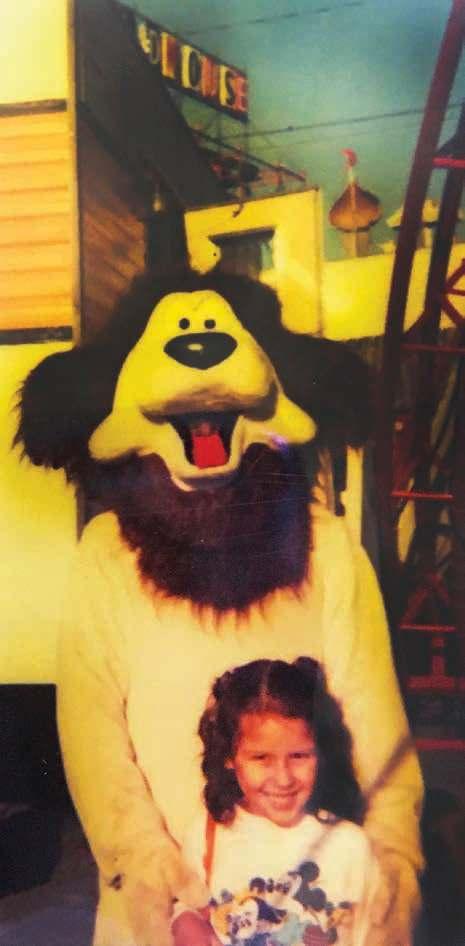
was an infant to having two of her own ten children die shortly after they were born, to later losing “three grandchildren in tragic accidents over the years.”
Any adult who remembers how hard early teen transition years were will have sympathy for the emotional confusion and sadness Mia goes through.

Besides the person she loves most being gravely ill, Mia and her family take up residence in a motel near the hospital so that they can be near at hand—hardly the way a young teen would choose to spend her summer holiday. Then, by one of those lucky flukes that life sometimes grants, Mia sees a notice for a basketball camp, which she is quick to join. Having previously played, this experience helps her regain some of her old confi-
dence and spirit.
When at last the family needs to go back home, they bear heavy hearts. And yet this is one of the most interesting parts of the book as the author, herself from the Gitxaala Nation, offers some of the arrangements they “as Tsimshian people…must follow.” Such explanations serve to enlighten readers and never feel preachy or intrusive.
In so many ways, Spencer has given us a book that we as West Coasters will immediately recognize as part of us, like this poetic interior monologue from Mia: “I stare out the window at the dreary sky. It’s drizzling. That fine rain that seems harmless yet coats you in wet.”
Although it isn’t essential to read the first book, it does enhance one’s understanding of what life is like for Mia and her family, including some of the ways they experience discrimination. It will be interesting to see whether Spencer might decide to add another volume to this insightful coming-of-age story.
9781459838208
Heidi Greco is a Surreybased poet and reader.
Elder Johnny Aitken and Jess Willows have co-written Two Tricksters Find Friendship (Orca $8.95) for ages 6 – 8, based on their real-life friendship in the community of Mayne Island. In the story Jessie, a young white girl, moves to a small island where she and Johnny, a local Indigenous boy, form an inseparable friendship. Two friends, two different circumstances, two different cultures—they lean on each other while navigating challenges and cultural prejudices. Their experiences shine a light on how we care for each other on the journey of truth and reconciliation. Aitken is an interdisciplinary artist, actor and activist, and Willows is an educational professional. Illustrations by Alyssa Koski 9781459839281
the Pacific Islands, Carol E. Mayer, has now written about them in Sea of Islands: Exploring Objects, Stories, and Memories from Oceania (Figure 1 Publishing $55). Artifacts include jewellery, barkcloth, woven mats, carvings and canoes from Australia, Fiji, Papua New Guinea, the Solomon Islands, the Marquesas Islands, Vanuatu and many more places as depicted in over 250 photos and images from Oceanic communities for context. Mayer has been honoured with awards from museum associations and a medal from Vanuatu for her cultural contributions.
9781773271552
Often inspired by real events, B.R. Bentley’s mystery novels have realistic characters and plots set in international locales including his fourth title, The Blood Labyrinth (FriesenPress $20.99). Beginning in South Africa in 1948, a double agent working for England’s MI6 is murdered. He leaves behind his lover who, unbeknownst to him, is pregnant. The lover hightails it back to the UK and puts the baby up for adoption. Seventy-four years later, a woman in Canada gets a DNA test to confirm she is related to a woman suffering from dementia, who might be her mother. That DNA test connects her to the murdered man from 1948. The novel links these characters for a surprising conclusion. 9781038318985
UBC’s Museum of Anthropology has Canada’s largest collection of objects from Oceania (more than 3,500) and its Research Fellow and curator of


In Born of the Storm (Page Count $20) Don McLellan delivers a collection of short stories about the complexities of urban life and human resilience.
Characters include Frank, the protagonist’s father-figure uncle, who, as a teen, and though never having been in a building higher than a few stories, served as a tail gunner aboard a Lancaster bomber on seventeen bombing missions over Germany.
“When the music is playing,” Frank says of his enlistment, “you have to dance.” McLellan has been nominated for the Commonwealth Short Story Prize twice, a ReLit Award, a Pushcart Prize and a Whistler Independent

Book Award. His previous collections include Quiet After Slaughter (Libros Libertad, 2009), Brunch with the Jackals (Thistledown, 2015) and Ouch (Page Count, 2020). 9781777361617
Having written about the ups and downs of the news media business for over 25 years, Marc Edge’s latest book, Tomorrow’s News: How to Fix Canada’s Media (New Star $21) peers into the emerging post-print world. How do we get away from all the misinformation that is fast becoming a feature in democratic countries that rely on the fourth estate to make
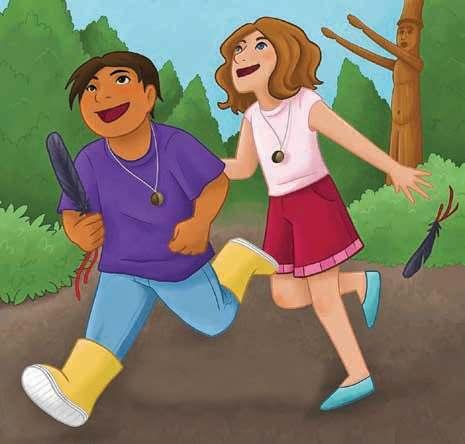
informed decisions? Journalism isn’t going away Edge argues as he lays out ways for news organizations to thrive in the future. The key will be an ability to shift revenues from advertisers to readers.
9781554202140

Sandy Chambers was determined to live the free life the Sixties offered. Her make love, not war experience was cut short when she stumbled over the body of her new lover. There’s more drama to follow for the budding flower child in Faye Bayko’s debut novel Fake Out (Tellwell Talent $26.99) which follows Chambers into a world of drug lords, resource companies and family feuds. While the characters are fictional, they live and work at the real historic Wickaninnish Inn near Tofino. Bayko lives in Port Alberni.
9781779624789
Video games are often thought of as socially isolating mechanisms that create a wide array of harmful effects on youth. In Of Floating Isles: On Growing Pains and Video Games (Arsenal $26.95) Kawika Guillermo’s personal essays reframe the gamer’s retreat as a quest for a different community, “one where they feel seen, heard, and understood,” says publicity for the book. “Games provide reflective realms to swell, to imagine, and to build spaces for queer, trans, racialized, and neurodiverse groups.” Guillermo has a lifelong attachment to video games.
9781834050065
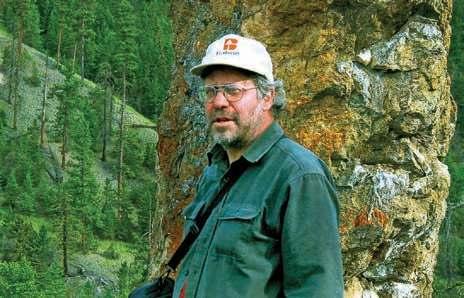
The Cost of a Hostage: A Lane Winslow Mystery by Iona Whishaw

9781773861531
With an MA in history as well as plenty of exposure to West Coast lore, Douglas Hamilton mixes the two in Who Shot Estevan Light? And Other Tales from the Salish Sea and Beyond (Caitlin $26). Subjects include a BC pirate who claimed he was part of Butch Cassidy’s gang; a little-known French explorer who rivalled Captain Cook for travels in the Pacific; and BC’s Estevan Point Lighthouse, reportedly shelled by a Japanese submarine in 1942 (although a 1995 CBC Fifth Estate report speculated it was propaganda to support the government’s wartime policies for conscription).

Kwantlen First Nation writer, Joseph Dandurand writes plays, kidlit and poetry. He has won and been shortlisted for some of BC’s and Canada’s biggest poetry prizes including the Griffin Poetry Prize for The East Side of It All (Nightwood, 2020), written from the perspective of a drug user and single-room occupant in Vancouver’s Downtown Eastside. His latest book of poems, I Would Like to Say Thank You (Nightwood $19.95) returns to the streets of the East Side but extends beyond it to spirits and the Kwantlen people. 9780889714908
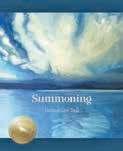
Jacqueline Bell has won the 2025 Raven Chapbooks Poetry Contest for her deeplyfelt collection, Summoning (Raven Chapbooks $22.95), described by judges John Barton and Arlene Paré as “elegiac, yes, familial, inconsolable.” There’s the death of family, a lost lover and sadness about nature. There’s also an elegy to lost childhood that reflects on the memory of two sunburnt children on a beach and “that huge / mint-green anemone / remember / how its tentacles cleaved to / your finger / then / one by / one they / let / go.”
9781778160387
LGBTQ+ author Ron Kearse has released a fantasy novella about an introvert named Neville who meets his guardian angel in Craig! (An Unlikely Story) (Filidh $24.50). Never one to assert himself, Neville was “content to be small,” writes Kearse. “Never mind me,” Neville thinks as he retires from his soul-destroying government job. Then he meets Craig—an angel given permission to appear in human form by the Archangel Michael—who accompanies Neville on motorcycle rides and extended trips to Europe. Is this new reality too good to last?
9781998307050
Known for her poetry on relationships, mortality, dark periods in her past and aging, Evelyn Lau’s tenth collection, Parade of Storms (Anvil $18), embraces a new subject: the weather. It was shortly after the Covid pandemic that the increasingly changeable effects of climate change captured Lau’s attention. Environmental devastation from wildfires, floods and storms had suddenly become more frequent. The language of this new weather includes ”atmospheric rivers,” “pineapple express,” “heat dome” and yes, “parade of storms.” For good measure, Lau also returns to her past themes and emotional “bad weather.”
9781772142457
A boy living in a tree house reading books about mythical creatures wonders why he hasn’t yet met any in Daniel Anctil’s kidlit title, Monster Friends, Where Are You? (Midtown $21.95). He thinks they must be hiding, so he goes on a journey to find and befriend them. Will he find these creatures and can he make friends with monsters he’s seen only in books? The publisher describes the book as “a whimsical story about looking for friends and excitement.” Anctil, of Vancouver, holds a Bachelor of Arts in religion and psychology from the University of Victoria. Illustrations by Corentin Hunter 9781988242569
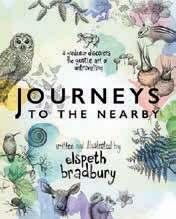
Journeys to the Nearby: A Gardener Discovers the Gentle Art of Untravelling by Elspeth Bradbury (Ronsdale $22.95)
Master gardener, Elspeth Bradbury eschews longdistance travel and, instead, shows how to delve into our own gardens or nearby parks, boulevards, riversides, beaches — wherever you can gain access to living plants and animals. Includes the author’s enchanting illustrations of her garden. With wit and wisdon, we find out about the author’s life along the way.
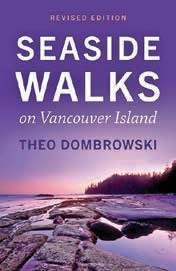

With colourful, easy-tofollow maps and step-bystep descriptions of what to expect, Theo Dombrowski’s guide is for those looking to explore the seashore. He also includes information for others who love walking through forests and seaside meadows. His information helps walkers select different levels of difficulty.
In the 12th title of this popular mystery series set in postwar Kootenays in the fictional hamlet of King’s Cove (near Nelson), the heroine — an ex-secret service agent from Britain — Lane Winslow learns that the brother of her husband, Inspector Darling, has gone missing from a mining camp in Mexico. The two set out to find him and run into a local bandido. Meanwhile back at the Kootenays police office, a kidnapping case causes concern.
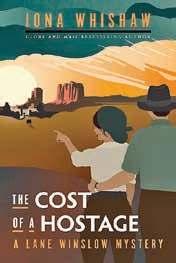
Known for his popular children’s First West Coast Book series and Northwest Coast Legends series, Indigenous painter, carver, printmaker and storyteller, Roy Henry Vickers has published this high-quality colouring book for all ages. Features 42 West Coast scenes and motifs with a focus on spirits of the natural world and landscapes. An inspiring way to interact with West Coast art.
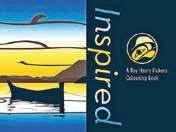

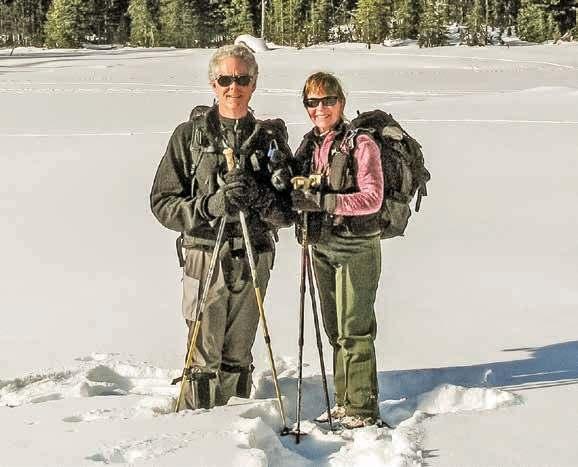
Stanley Munn and Patricia Cucman spent more than 20 years researching J.E.H. MacDonald’s sketches and paintings inspired by BC’s Lake O’Hara.
J.E.H. MacDonald and the O’Hara Years, 1924–1932 (Figure 1 Publishing)
by Stanley Munn
In the last nine years of his life, Group of Seven artist James Edward Hervey (J.E.H.)
MacDonald travelled from Toronto to BC’s Lake O’Hara seven times where he painted hundreds of outdoor sketches for canvases he later completed in his studio. Almost a century later, retired geologists Stanley Munn and Patricia Cucman gathered 20 years of original research from archives and in the field for an artbook examining MacDonald’s O’Hara art-
work. They organized MacDonald’s sketches and studio works geographically and paired them with present day photographs taken from the same spots where the artist sketched. “We hiked O’Hara high and low, sat where he had sat … and photographed what he had seen,” says Cucman. “We read his letters and poetry and scoured his diaries to unravel the riddles he had left behind. Over time, we grew to admire his spirit, his humour, and his artistry.”
Signs of the Time: Nłeʔkepmx Resistance through Rock Art (UBC Press) by Chris Arnett Pentecostal Preacher Woman: The Faith and Feminism of Bernice Gerard (UBC Press) by Linda Ambrose
The Basil Stuart-Stubbs Prize was established in memory of Basil Stuart-Stubbs, a bibliophile, scholar and librarian who passed away in 2012. Stuart-Stubbs’ many accomplishments included serving as the University Librarian at UBC Library and as the Director of UBC’s School of Library, Archival and Information Studies. Stuart-Stubbs had a leadership role in many national and regional library and publishing activities. During his exceptional career, he took particular interest in the production and distribution of Canadian books and was associated with several initiatives beneficial to authors and their readers, and to Canadian publishing. Pacific BookWorld News Society co-sponsors this award with UBC Library.


After being relocated to a remote beach last year, a juvenile elephant seal nicknamed Emerson made its way back to Victoria’s beaches to continue moulting. While Department of Fisheries and Oceans staff worried about the 500-pound seal mixing with humans—particularly children and their pets—it didn’t seem to bother the seal to have people and cars nearby. Graphic designer Ginger Ngo has written and illustrated Emerson the Elephant Seal (Harbour $24.95) for ages 3–5 imagining why a seal would forgo the wild for the bright lights of Victoria.
9781998526345
Shoppers at Vancouver’s Doda Antiques are witnesses to the aesthetics of one of BC’s singular collectors, John David Lawrence. Lawrence has been amassing a wide array of ceramics, jewellery, photographs, paintings and ephemera from local artists for over four decades. His Chinatown apartment is even more overwhelming than his shop as detailed in The Place of Objects: The John David Lawrence Collection (Figure 1 $45) edited by Stephanie Rebick and Michael J. Prokopow. The book’s foreword, by Anthony Kiendl, past executive director of the Vancouver Art Gallery, sums it up: “Each object, lovingly acquired and cared for, is a repository of memories that collectively amount to a forty-year project to document and preserve the cultural production of BC.”
9781773272719
In the depths of addiction, Nina Peers of Powell River sought support to understand her sense of powerlessness over her condition. She began reading Nar-Anon literature and found relief. It led Peers and her girlfriend to start a new 12-step meeting program in their community. She also earned an addictions counsellor certification at McMaster University and now works as a Mental Health Substance Use Counsellor at a non-profit men’s treatment centre in Powell River. She has written about her journey in Dancing with Addiction (self-published $25).
9781998495016
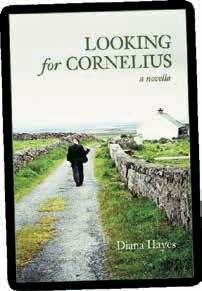

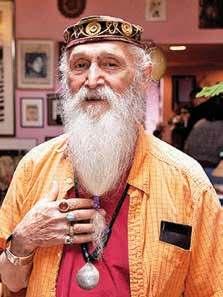
Jo, a recovering alcoholic, meets Rick, sober for many years in Christine Quintana’s play,
As Above (Playwrights Canada $18.95) set against the cedar forests of Victoria.
Jo had once been a renowned botanical researcher but now is reduced to giving lectures at the local horticultural centre.
When Jo’s estranged daughter phones her, Jo sets out to reconnect. It’s a perilous internal journey for the
underground communication between trees and healing and reconciliation.
9780369105820
The stampede and escape of elephants from a circus in 1926 is still talked about in Cranbrook. Most were rounded up but three stayed at large in the nearby forest. One female was recaptured within a week, an older female died and the third, known as “Cranbrook Charlie,” took three weeks to catch. That same year there was a viciously-fought federal election campaign underway—all true events covered in R.D. Rowberry’s fictionalized account of these momentous times, Frank and the Elephants: A Romance of the Rockies (selfpublished $18.95).

The young protagonist named Frank is campaigning for one of the candidates while also courting a young woman.
9781738218004
Charlene Smith grew up in a nonMuslim family, swimming, biking, skating and playing soccer. When she converted to Islam at the age of 19, she began wearing a hijab. “Suddenly, playing sports wasn’t so simple,” Smith says. “Would I overheat while running in all those clothes? Would I be allowed in a swimming pool with my hijab? What would the aunties from the mosque say about my running around outside?” It led her to write Game Changers: Stories of Hijabi Athletes from around the World (Orca $24.95) about the many Muslim women who participate in sports but are rarely covered in the news or discussed on social media. For ages 9-12 with illustrations
by Natalya Tariq
9781459838048

Social justice advocate, Tash McAdam’s No One Left But You (Penguin Random House $15.99) follows a newly-out trans teen in his final year of high school in this YA novel. Max starts the year dealing with the object of his summer romance who has turned into a bully. Then, remarkably, Max becomes the focus of Gloss, the new It Girl. A “rager” (slang for an alcohol-fueled party) goes wrong and accusations fly, affecting both Gloss and Max. Although Max’s memories of the night are fuzzy, he is determined to find out the truth. McAdam is a mentor for trans youth through the Gender Generations Project.
SteepedinCelticmythologyandmusic,andaccurateIrishhistory,particularly ofTheGreatHunger,spicedwithglimpsesofthesupernatural, LookingforCornelius, byDianaHayesisasatisfyingstory,setmostlyinIreland,ofayoungwoman’s search forherIrishgreat-grandfatherwhileaccompanyingherthirteen-year-oldfiddlestudent tocompeteforamusicscholarshipinCorkCity.Thewritingistightandoftenpoetic, theresearchanddescriptionsofIrishlocationsareimpeccable,andtheplottwists are notforeseeableandsomostpleasing.Amust—andnotonlyforloversofIrish stories.
PatrickTaylor,NewYorkTimes,USAToday,andGlobeandMailbest-sellingauthorof the IrishCountryDoctor series
DianaHayes’gracefulpoetictouchservesthisnovellawell.Hauntedbyancestral presence,richwithloreandmagic,liketheIrishlanguageitself, LookingforCornelius sings.
ISBN:979-8-3852-5033-2$15US:$21CDN Toorderbooks,email:orders@wipfandstock.com
9781641294898


BillGaston,authorof TunnelIsland








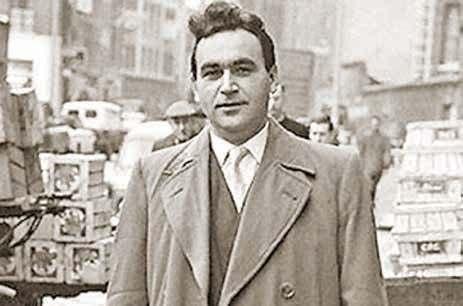
Rudolf (Rudi) Vrba co-wrote what is now known as the Vrba-Wetzler Report, documenting the death of Jews at Auschwitz. The report prodded world leaders like Pope Pius XII, Winston Churchill, FDR and others to finally impede the transport of Hungarian Jews from Budapest to concentration camps.
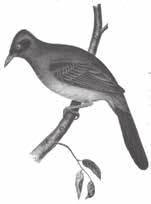

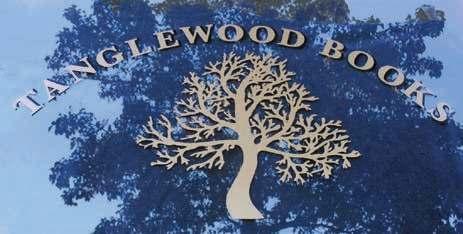
In Uma Krishnaswami’s final instalment of the Book Uncle trilogy—the middle-grade novels set in India about the power of grassroots activism and how kids can make a difference— The Sunshine Project (Groundwood $11.99), the karate-loving Anil and his friends have been championing a solar energy project. Anil doesn’t like speaking up, for, as his karate sensei says, “best fight, no fight.” But when he learns that the new solar panel factory the city is planning will threaten plant and animal species, Anil takes action with help from Yasmin and Reeni (the main protagonists, respectively, of the first two titles). Just how loudly will he have to speak up? Illustrations by Julianna Swaney 9781779460530
One of the Holocaust’s greatest but little-known heroes, Rudolf (Rudi) Vrba, who lived in Vancouver from 1973 to 2006, is soon to get his due. Having escaped from Auschwitz with a fellow Jew in April of 1944, Vrba, still a teenager, co-wrote a fact-filled report that finally convinced world leaders about the true extent of the Holocaust. He later regarded it as, “my first scientific paper.” He is now credited by many world historians for saving 200,000 lives during World War II. The founder of BC BookWorld, and a member of both the Order of Canada and the Order of BC, Alan Twigg has now completed the first volume of a twobook biography, Holocaust Hero: The Life & Times of Rudolf Vrba (Firefly $29.95), set for publication on September 15 with a book launch at Vancouver’s Jewish Community Centre on September 28. 9780228105718
It takes a poet to capture the sensory appeal of the West Coast in a few words, such as these lines from Wendy Donawa’s third collection, The Time of Falling Apart (Harbour $22.95): “the tide’s pebbly click and shush/and crows cawing in the arbutus.” Donawa reflects on her childhood in the towns of Vancouver Island while also writing about all that happens in life including the horrors. Colonialization, competing ideologies and a pandemic are experienced side by side with bees humming in flowers, Bach, friends and cappuc-
cinos. Donawa’s first poetry book, Thin Air of the Knowable (Brick Books, 2017) was longlisted for the Raymond Souster Award and a finalist for the Gerald Lampert Award.
9781998526307
Centuries-old stories from the Xwémalhkwu (Homalco) First Nation that were recorded by elders in the 1990s and 2000s have now been published in the graphic novel Xwémalhkwu Hero Stories (Homalco First Nation, $27.50). Host and producer of Our Native Land podcasts, Tchadas Leo is the managing editor of the project. Three Indigenous graphic artists— Alina Pete, Valen Onstine and Gord Hill—illustrated the stories. The recordings, which were also turned into a mini podcast featuring 11 Homalco elders, capture memories of life in the HFN’s traditional territory in Bute Inlet, with elders sharing their childhood experiences, traditional customs and Coast Salish history. Contact: heroes@ homalco.com
9781068941009
Told through gentle poetic rhymes, Yoga Adventures for Little Explorers (Pownal Street Press $24.95) by Megan McDougall tells the story of a little one’s first journey into the world of yoga—a place she describes as full of imagination, relaxation and safety. Hayley Lowe’s accompanying realistic illustrations bring to life a cast of friendly animal companions, creating a visual world that feels both comforting and engaging. The author and the illustrator are both experienced children’s yoga teachers.
978998129232
Set over a single chaotic day in Detroit, this debut novel follows queer Palestinian refugee, Firas Dareer, as he plans to come out to his family at an elaborately staged birthday dinner, only to find his orchestrated reveal thrown into disarray by a chain of escalating crises. Three Parties (Hamish Hamilton $34.95) by Ziyad Saadi explores Palestinian diasporic life, generational trauma and the pressure of queer self-revelation. It’s a story of fractured families and the quiet dignity of choosing to be known on one’s own terms. Saadi is a Palestinian Canadian writer and filmmaker based in Vancouver. 9780735250963
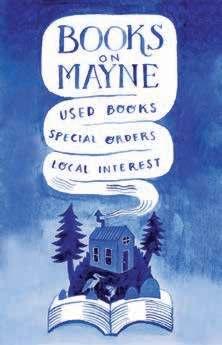
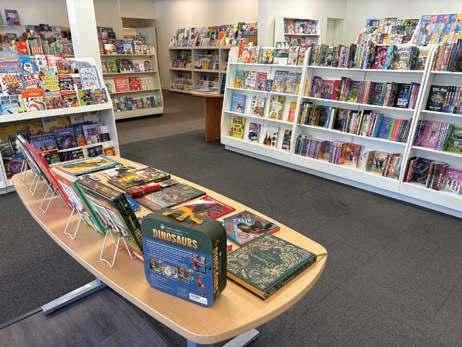
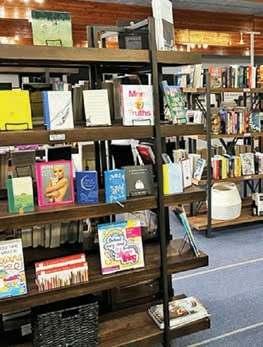


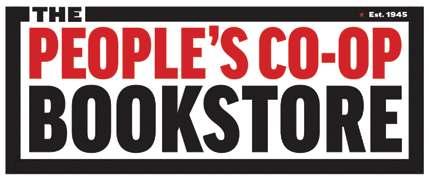
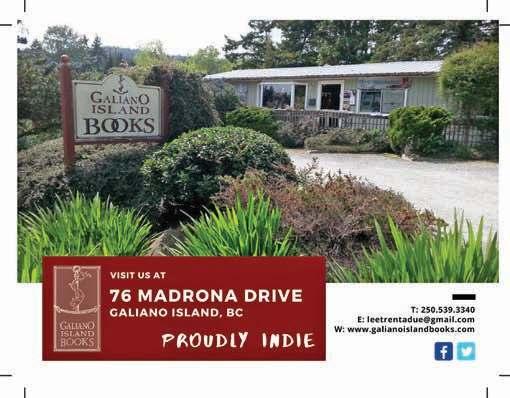
QUICKIES is an affordable advertising vehicle for authors & books. For info on how to be included: bookworld@telus.net




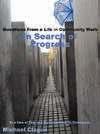
Marsha Donner
(1939 - 2025)
Involved in the heyday of experimental writing that was centred in Kitsilano in the late 1960s to early 1970s, Vancouver poet Judith Copithorne died on May 15, 2025. Copithorne’s interest in visual arts led her to blend words and pictures in cross-media experiments with visual and concrete poetry. In doing so, “she broadened the limits of what Canadian literary adventuring could be,” reviewer Trevor Carolan wrote in BC BookWorld in 2024.
Born in Vancouver on August 5, 1939, for much of her writing life, Copithorne chose to work with small publishers and small print runs, although Toronto-based Coach House published two of her collections and in 2023 Talonbooks published a cross section of her selected works, Another Order, edited by Eric Schmaltz who wrote that her work encompassed “illustration, sketching, calligraphy, and typewriting while bringing together poetry, visual art, comics, life writing [and a] tireless fusing of technique, mode and genre.”
Kerri Scott
Anvil Press...10
Arsenal Pulp Press...10
Banyen Books...37
BC
BC
Books On Mayne...37
Douglas & McIntyre...2
EVENT Magazine...36
Filidh Publishing...11
Firefly Books...13
(1920 – 2025)
Born in Seattle on November 24, 1920, Mary Palmer and her husband purchased the 640-acre Jedediah Island (tucked in between Texada and Lasqueti islands in the Strait of Georgia), in 1949. She wrote about her next 45 years maintaining a working farm on a secluded island in Jedediah Days: One Woman’s Island Paradise (Harbour, 1998/2007). When the couple retired from Jedediah, they turned down lucrative offers for the island in favour of accepting a lower price from the Province so that it could be protected as a park. Palmer also wrote ABCs of West Coast Gardening (Harbour, 2002) about dealing with the adverse weather and wildlife in our region. Palmer died at 104 on March 31, 2025.
(1947 – 2025)
Andrew Scott died on June 29, 2025 of Parkinson’s-related causes. Scott won the Roderick Haig-Brown Prize
Guiled, Brenda...16
Greystone Books...22
Harbour Publishing...40
Inlet Publishing...29
Kingfisher Books...36
McGill-Queen’s University Press...29
McKinnon, Neil...29
Mermaid Tales Bookshop...37

Ladysmith welcomed two new booksellers this past summer when Catherine Quaglia (left) and Dana Corbett took over the retail space at 535 1st Avenue left by Frieda Douglas after she retired from Salamander Books. Quaglia and Corbett, who renamed the store to Boundless Books, say that the business represents a big dream come true for them. “Boundless to us means limitless possibility, openness, expanse in experience and most importantly, joy,” says Quaglia. “We believe that reading provides endless possibilities of discovery and learning and gives us all an opportunity to explore new ideas and adventures.” Both Corbett and Quaglia come with years of experience managing bookstores and selling books. “I like to think that Frieda saw the energy and passion we had for independent bookstores and felt we could take what she had created and continue to provide Ladysmith with a vibrant, locally-owned, independent bookstore,” says Corbett.
for best book about BC for Encyclopedia of Raincoast Place Names: A Complete Reference to Coastal British Columbia (Harbour, 2009), which also took the Lieutenant Governor’s Medal for best BC historical book. He was a major contributor to the Encyclopedia of British Columbia (Harbour, 2000) and his publisher, Howard White, says: “Andrew … wrote up all the named communities for the Ency-
New Society Publishers...14 Orca Books...4
Penguin Random
Ryga Award for Social Awareness...24
SFU Writers Studio...6
clopedia of BC and I have never had anyone come up to me and say their home town was missed … His Encyclopedia of Raincoast Place Names is a landmark work I can’t imagine anyone else having done. And through it all he was a delight to work with—a true scholar and a truly gentle man.” Born in Swansea, Wales on November 26, 1947, Scott immigrated to Canada with his family in 1957.
Tanglewood Books...36
Tanner’s Books...37
The Book Shelf...37
Thornapple Press...14
Tradewind Books...26
UBC Press...26
Vancouver Desktop...36
Vancouver Writers Festival...17
Whistler Writers Festival...16
Woodcock Award...18
Wayzgoose...11



books@islandblue.com or 1.800.661.3332 www.islandblue.com
